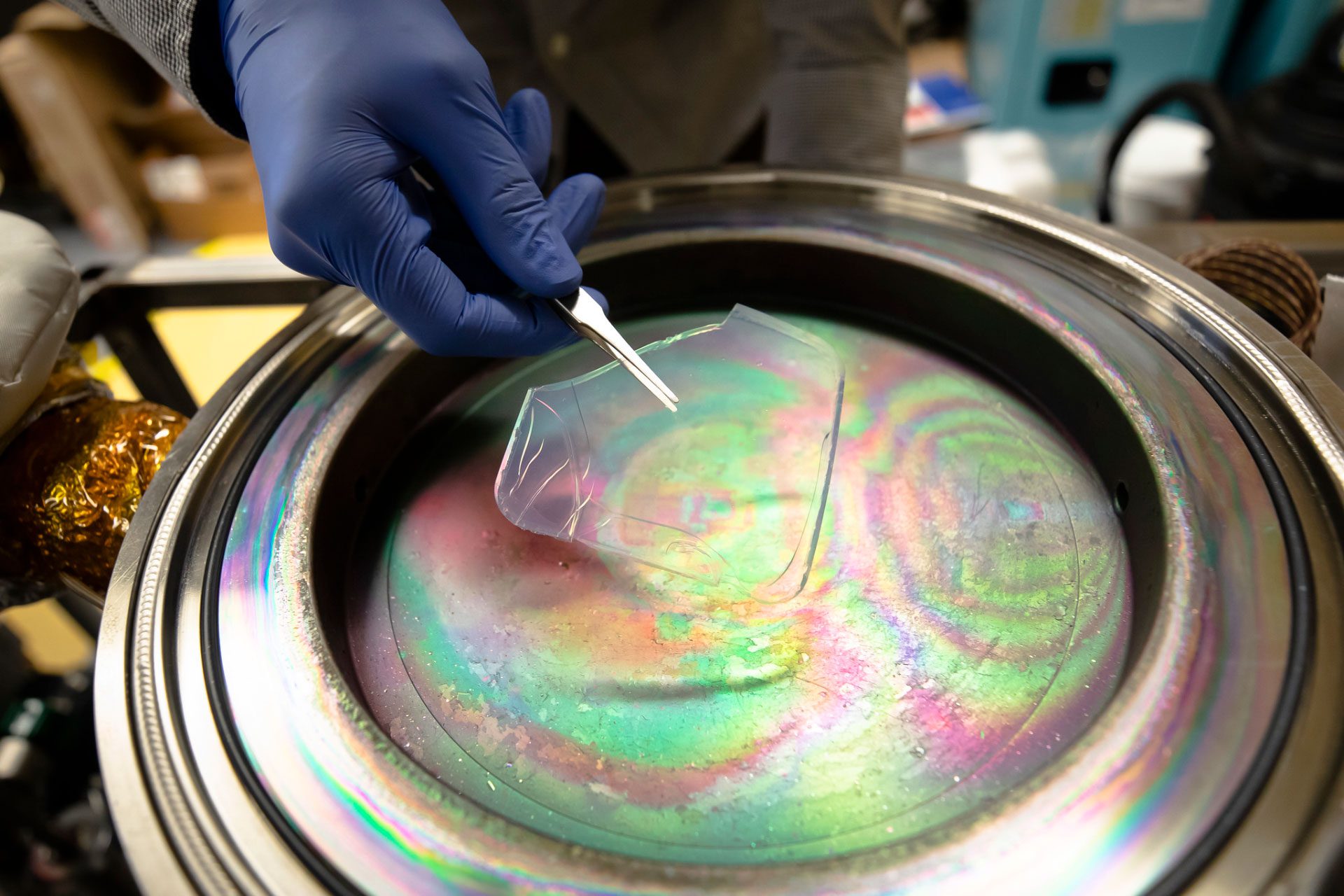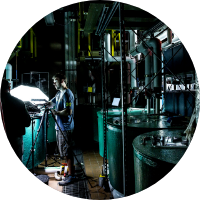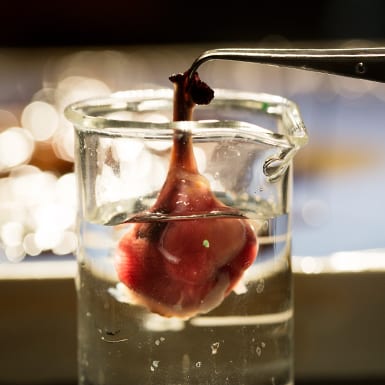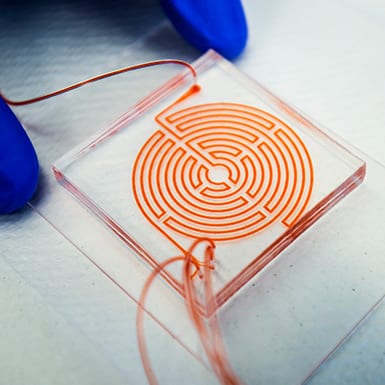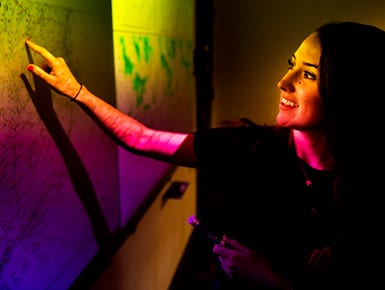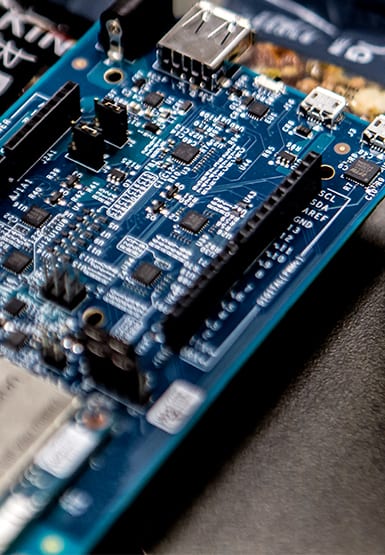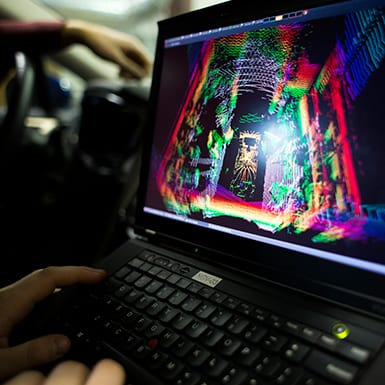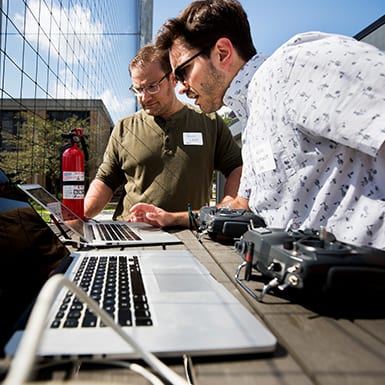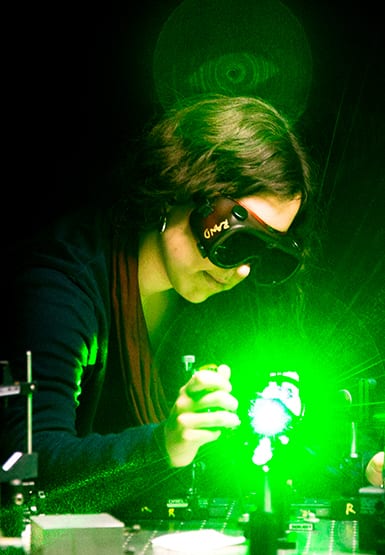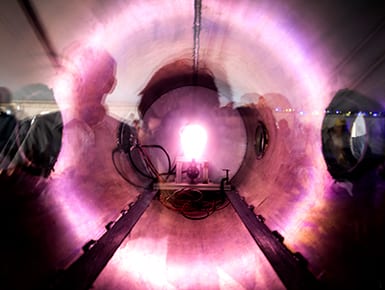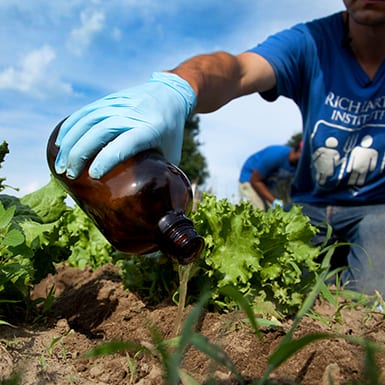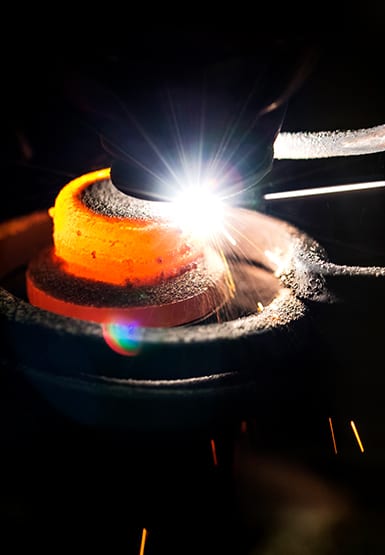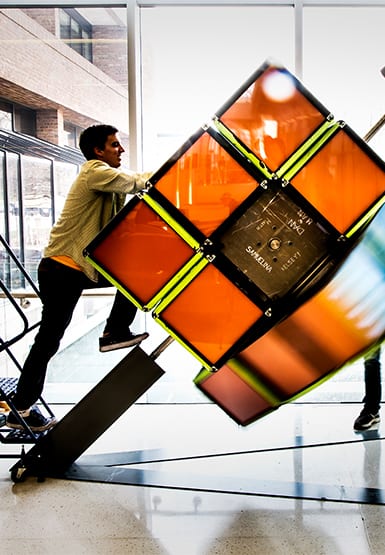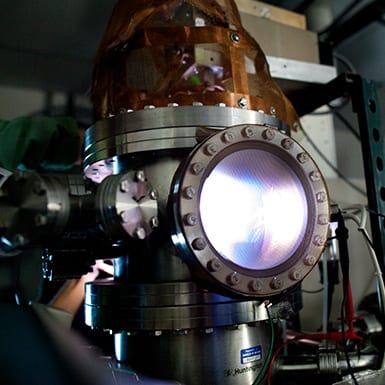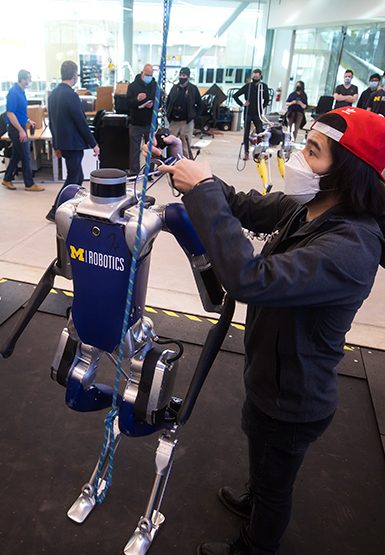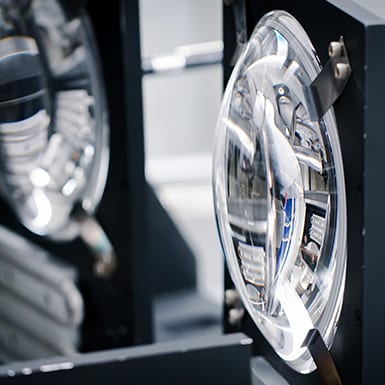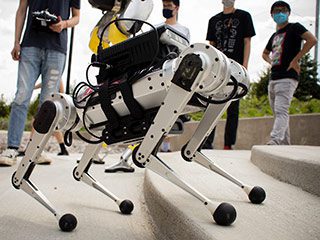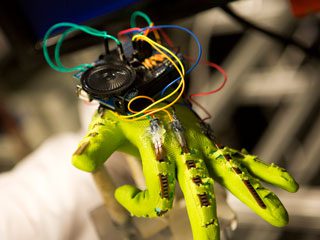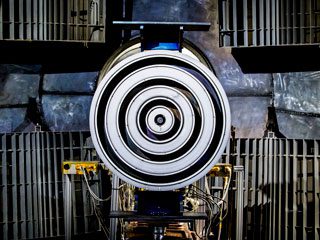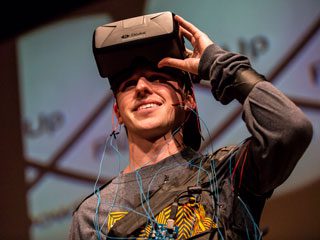Renewables, Environment, and Sustainability
New sources of energy for transporting our goods, lighting our homes, powering our businesses, and moving people from place to place.
Protecting the environment and expanding access to clean air and water resources. In a coming era of scarcity, how can engineering and science transform our ways of living to make them truly sustainable?
Explore all
U-M and UCR Launch New Alliance to Promote Hydrogen Fuel for Internal Combustion Engine (ICE) Vehicles
U.S. lags behind other countries in support of hydrogen technologies.
The post U-M and UCR Launch New Alliance to Promote Hydrogen Fuel for Internal Combustion Engine (ICE) Vehicles appeared first on Michigan Engineering News.
Finding the most efficient carbon-neutral aircraft for your flight
Sustainable aviation doesn’t have a one-size-fits-all solution, but an interactive tool can identify the right fit given the flight distance, speed and payload.
The post Finding the most efficient carbon-neutral aircraft for your flight appeared first on Michigan Engineering News.
New water purification technology helps turn seawater into drinking water without tons of chemicals
Cutting acid and base treatments from conventional desalination plants could save billions of dollars globally, making seawater a more affordable option for drinking water.
The post New water purification technology helps turn seawater into drinking water without tons of chemicals appeared first on Michigan Engineering News.
$5M to improve testing, durability, and noise levels of wave energy devices and offshore wind
The research could make offshore renewable energy more reliable and a better neighbor to marine life, also enabling laboratory testing of larger prototypes.
The post $5M to improve testing, durability, and noise levels of wave energy devices and offshore wind appeared first on Michigan Engineering News.
Light, flexible and radiation-resistant: organic solar cells for space
Some carbon-based solar cells already show no drop in performance after three years’ worth of radiation, and the cause of degradation in others could be preventable.
The post Light, flexible and radiation-resistant: organic solar cells for space appeared first on Michigan Engineering News.
Beaver Island residents sign up for U-M wave energy panel
Each member will provide essential input for U-M engineers to design a wave energy prototype that best suits the island’s needs.
The post Beaver Island residents sign up for U-M wave energy panel appeared first on Michigan Engineering News.
Burned rice hulls could help batteries store more charge
New research finds hard carbon in rice hull ash, providing a cheap, domestic source of the material that can replace graphite in lithium-ion or sodium-ion battery anodes.
The post Burned rice hulls could help batteries store more charge appeared first on Michigan Engineering News.
Q&A: Getting serious about atmospheric methane removal
Margaret Wooldridge discusses report from the National Academies, calling for increased research into another greenhouse gas to target for removal.
The post Q&A: Getting serious about atmospheric methane removal appeared first on Michigan Engineering News.
Up to 30% of the power used to train AI is wasted. Here’s how to fix it.
Smarter use of processor speeds saves energy without compromising training speed and performance.
The post Up to 30% of the power used to train AI is wasted. Here’s how to fix it. appeared first on Michigan Engineering News.
U.S. presidential advisory council visited U-M for transportation & mobility research
‘There’s an intellectual milieu and an enthusiasm that’s palpable.’
The post U.S. presidential advisory council visited U-M for transportation & mobility research appeared first on Michigan Engineering News.
Unlocking ocean power: $3.6M for community-centric wave energy converters
Wave energy could power millions of homes, but to make a splash in the industry, the tech must balance engineering, socio-economic and environmental trade-offs.
The post Unlocking ocean power: $3.6M for community-centric wave energy converters appeared first on Michigan Engineering News.
In step toward solar fuels, durable artificial photosynthesis setup chains two carbons together
The system produces ethylene, an important ingredient of many plastics, with much higher efficiency, yield and longevity than competing systems.
The post In step toward solar fuels, durable artificial photosynthesis setup chains two carbons together appeared first on Michigan Engineering News.
U-M engineers to partner in new DOE-backed research hub for clean energy storage
Researchers will advance battery technologies going beyond current lithium ion capabilities.
The post U-M engineers to partner in new DOE-backed research hub for clean energy storage appeared first on Michigan Engineering News.
Sea ice’s cooling power is waning faster than its area of extent
A shift in Antarctica’s melting trends and slushy Arctic ice pushes warming from changing sea ice toward the upper limits of climate model estimates.
The post Sea ice’s cooling power is waning faster than its area of extent appeared first on Michigan Engineering News.
Pinpointing coal plants to convert to nuclear energy, considering both practicality and community support
The most comprehensive coal-to-nuclear analysis to date could help policymakers and utilities plan how to meet climate targets.
The post Pinpointing coal plants to convert to nuclear energy, considering both practicality and community support appeared first on Michigan Engineering News.
Electric aviation: Batteries that stay strong for the flight duration
Borrowing methods from biology, a team of scientists and engineers designed and tested an electrolyte that keeps battery power delivery high, cycle after cycle.
The post Electric aviation: Batteries that stay strong for the flight duration appeared first on Michigan Engineering News.
US public opinion on social media is warming to nuclear energy, but concerns remain
300,000 X posts show 48 of 50 states have a more positive than negative tone about nuclear energy, with a national average at 54% positive.
The post US public opinion on social media is warming to nuclear energy, but concerns remain appeared first on Michigan Engineering News.
Making electric motors more efficient, affordable by 3D-printing magnets
A $2.6M project will fine tune an advanced manufacturing approach that opens doors to more power-dense and sustainable magnetic materials.
The post Making electric motors more efficient, affordable by 3D-printing magnets appeared first on Michigan Engineering News.
Renewable grid: Recovering electricity from heat storage hits 44% efficiency
Thermophotovoltaics developed at U-M can recover significantly more energy stored in heat batteries.
The post Renewable grid: Recovering electricity from heat storage hits 44% efficiency appeared first on Michigan Engineering News.
Costly gas separation may not be needed to recycle CO2 from air and industrial plants
New study offers a pathway for fossil fuel-burning operations to capture emissions.
The post Costly gas separation may not be needed to recycle CO2 from air and industrial plants appeared first on Michigan Engineering News.
Racing hydrogen cars in Detroit
Henderson Academy students used electrolyzers to produce hydrogen gas from water and power miniature fuel cell cars.
The post Racing hydrogen cars in Detroit appeared first on Michigan Engineering News.
Zero-carbon maritime shipping by 2050: U-M joins partnership to advance sustainability goal
Michigan Engineering researchers lead a collaboration with the Mærsk Mc-Kinney Møller Center for Zero Carbon Shipping.
The post Zero-carbon maritime shipping by 2050: U-M joins partnership to advance sustainability goal appeared first on Michigan Engineering News.
Snowfall and drought: $4.8M field campaign will improve forecasts in western US, led by U-M
A mountaintop laboratory and a suite of radar instruments will study winter storms from large-scale cloud movement down to individual snowflakes in an NSF-funded project.
The post Snowfall and drought: $4.8M field campaign will improve forecasts in western US, led by U-M appeared first on Michigan Engineering News.
Better battery manufacturing: Robotic lab vets new reaction design strategy
Mixing unconventional ingredients in just the right order can make complex materials with fewer impurities. The robotic lab that tested the idea could be widely adopted.
The post Better battery manufacturing: Robotic lab vets new reaction design strategy appeared first on Michigan Engineering News.
New reactor could save millions when making ingredients for plastics and rubber from natural gas
With oil production dropping, a process using natural gas is needed to avert a shortage of a workhorse chemical used for automotive parts, cleaning products and more.
The post New reactor could save millions when making ingredients for plastics and rubber from natural gas appeared first on Michigan Engineering News.
Urine-to-fertilizer effort part of NSF Regional Innovation Engine
U-M involved in Great Lakes consortium to support sustainable economic growth
The post Urine-to-fertilizer effort part of NSF Regional Innovation Engine appeared first on Michigan Engineering News.
Geothermal at Davos: a Q&A with Karthik Duraisamy
Karthik Duraisamy, a University of Michigan professor of aerospace engineering, participated in a roundtable on geothermal energy at the World Economic Forum.
The post Geothermal at Davos: a Q&A with Karthik Duraisamy appeared first on Michigan Engineering News.
Bulky additives could make cheaper solar cells last longer
The findings could help engineers methodically find the best molecules to increase the lifespan of perovskite solar cells, rather than relying on time-consuming trial and error.
The post Bulky additives could make cheaper solar cells last longer appeared first on Michigan Engineering News.
New energy
Once derided as “forever 30 years away,” fusion energy has a new swagger. Will it last?
The post New
energy appeared first on Michigan Engineering News.
Green chemistry award: Professor recognized for sustainable silicon metal production method
Richard Laine is the academic category winner in a national EPA contest.
The post Green chemistry award: Professor recognized for sustainable silicon metal production method appeared first on Michigan Engineering News.
Building a chemical ‘GPT’ to help design a key battery component
Taking inspiration from the word-predicting large language models, a U-M team is kickstarting an atom-predicting model with 200,000 node hours on Argonne’s Polaris.
The post Building a chemical ‘GPT’ to help design a key battery component appeared first on Michigan Engineering News.
$3M to boost state-of-the-art solar manufacturing
An effort led by U-M could enable industrial competitors to collectively build a predictive model that speeds the development of advanced solar cells.
The post $3M to boost state-of-the-art solar manufacturing appeared first on Michigan Engineering News.

Streamlining home assessments for energy justice
In a partnership with Ecoworks, Pecan Street, and Jefferson East, Prof. Johanna Mathieu is helping create a better process for Detroit homes to benefit from decarbonization, electrification, and renewable energy integration.
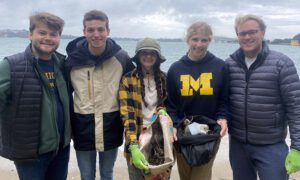
Broadening the engineering perspective through coastline conservation in Middle Earth
As part of the U-M Engineering Global Leadership (EGL) Honors Program, Electrical Engineering undergrad Nora Desmond traveled There and Back Again to experience the sustainability culture of New Zealand.

Ishtiaque Navid awarded Predoctoral Fellowship to support research impacting green energy
Navid is exploiting III-Nitride nanostructures for artificial photosynthesis and next generation nanoscale optoelectronics.
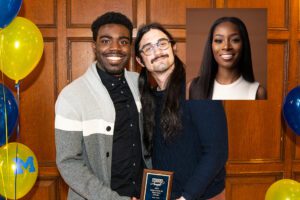
Team working to reduce energy burdens in Detroit recognized with Michigan Difference Student Leadership Award
PhD students Joshua Brooks, Xavier Farrell, and Madeline Miller are part of an NSF Smart and Connected Communities project that partners with local Detroit organizations to reduce household energy insecurity.
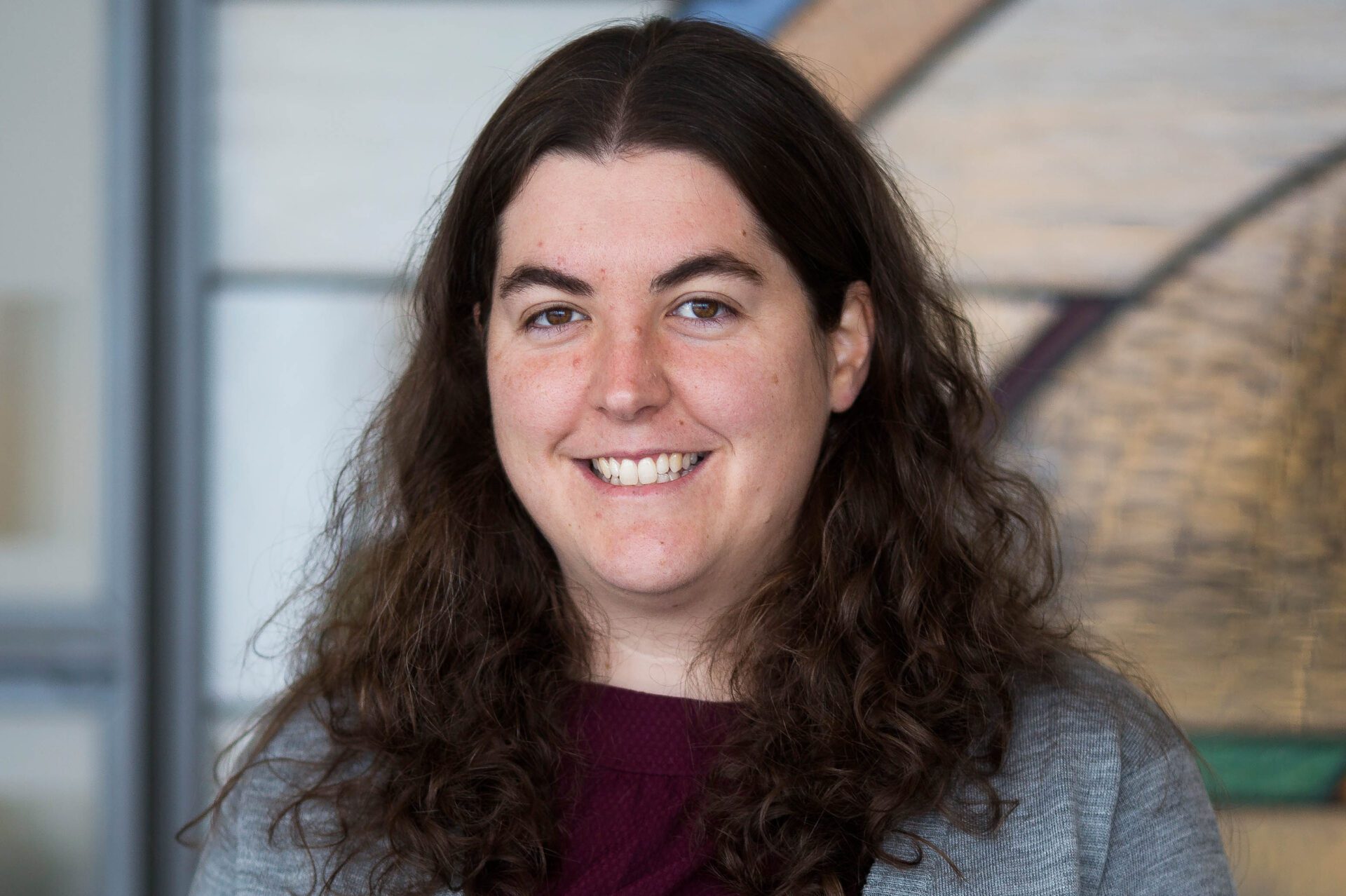
Johanna Mathieu awarded 2023 IEEE PES Wanda Reder Pioneer in Power Award
Mathieu is a national leader on research to reduce the environmental impact, cost, and inefficiency of electric power systems.
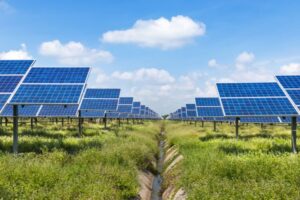
Eliminating the Tradeoffs Between Farming and Solar Energy Development
Testing Semi-Transparent Solar Cell Technology at U-M’s Campus Farm.
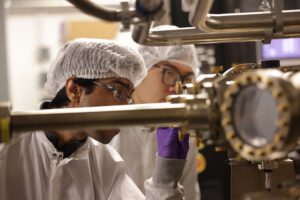
New method to produce green hydrogen offers promising path to carbon neutrality
With next gen solar cell technology, Prof. Zetian Mi leads a DoE project to develop high efficiency, low cost, and ultrastable production of green hydrogen fuels directly from sunlight and water.
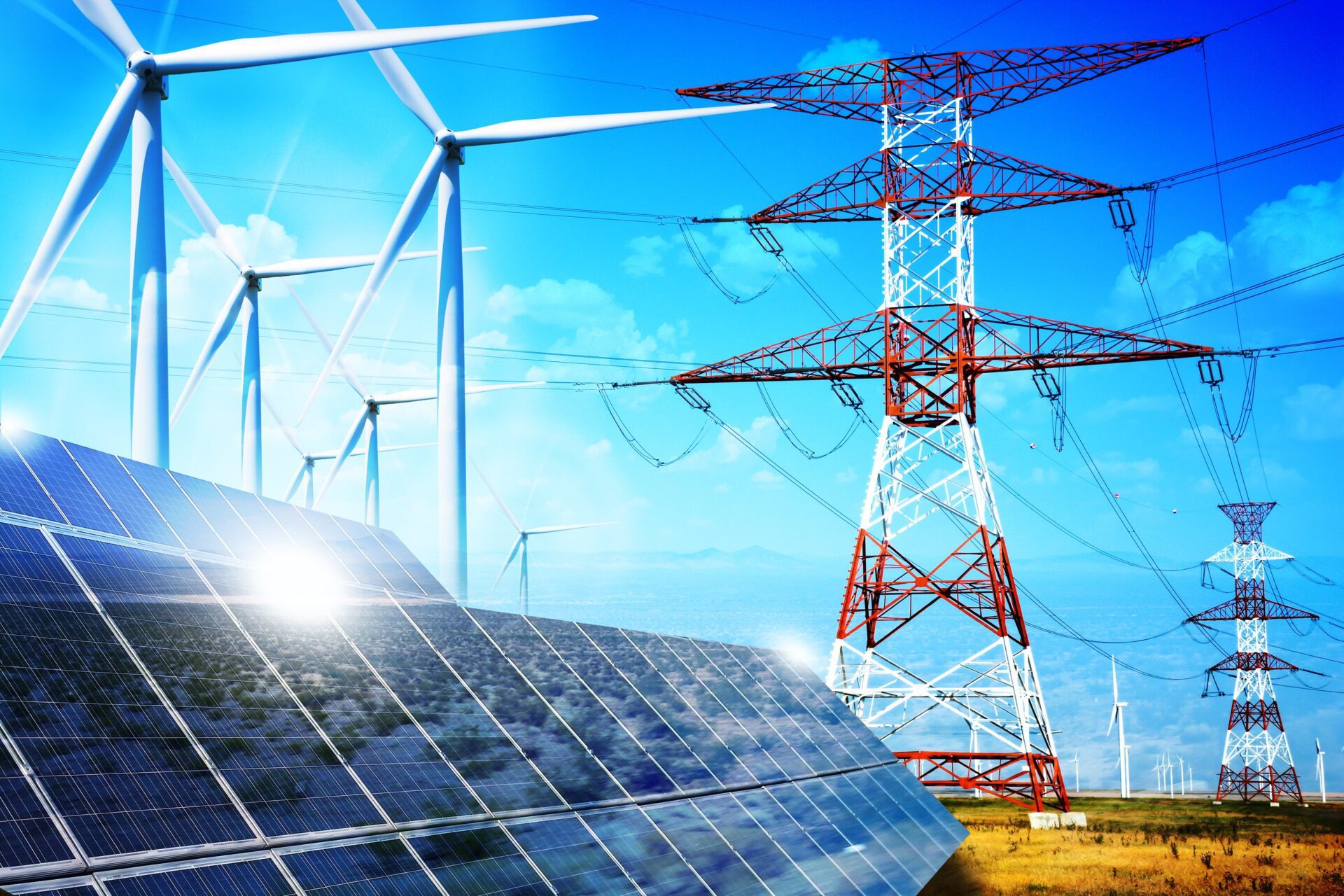
Research seeking to improve integration of renewable energy into the grid wins R&D 100 award
Led by Prof. Johanna Mathieu, the project utilizes strategic control of air conditioners to improve the overall efficiency and reliability of the power grid.
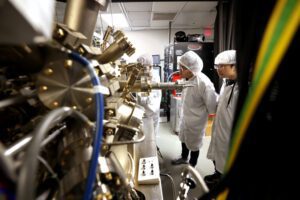
New global partnership aims to advance renewable energy generation with net-zero hydrogen production technologies
The Global Hydrogen Production Technologies (HyPT) Center seeks to create a viable pathway to decarbonize energy-intensive industries such as ammonia, steel, cement, aluminum, transportation, and more.
Reimagining the auto lab
Researchers in the Walter E. Lay Automotive Engineering Laboratory are investigating engine efficiency, alternative and low carbon fuels, connected and autonomous vehicles and vehicle electrification.
The post Reimagining the auto lab appeared first on Michigan Engineering News.
Equity in the energy technology transition is new Institute’s goal
The Institute for Energy Solutions will continue U-M’s 75-year legacy of leadership in energy research.
The post Equity in the energy technology transition is new Institute’s goal appeared first on Michigan Engineering News.
‘I’m supposed to be here’
A Ph.D. student shares his remarkable path from Cuba to chemical engineering at U-M.
The post ‘I’m supposed to be here’ appeared first on Michigan Engineering News.
Cheap, sustainable hydrogen through solar power
Withstanding high temperatures and the light of 160 suns, a new catalyst is ten times more efficient than previous sun-powered water-splitting devices of its kind.
The post Cheap, sustainable hydrogen through solar power appeared first on Michigan Engineering News.
Demystifying vortex rings in nuclear fusion, supernovae
A mathematical model linking these vortices with more pedestrian types, like smoke rings, could help engineers control their behavior in power generation and more.
The post Demystifying vortex rings in nuclear fusion, supernovae appeared first on Michigan Engineering News.
$1.3M to improve urea fertilizer production and reduce CO2 emissions
Rather than contributing to emissions, the production of an essential fertilizer could consume carbon dioxide, and a U-M team will explore such a method.
The post $1.3M to improve urea fertilizer production and reduce CO2 emissions appeared first on Michigan Engineering News.
$7.5M to advance nuclear energy awarded to U-M
The Department of Energy will support research into faster reactor licensing, just energy transitions, and more.
The post $7.5M to advance nuclear energy awarded to U-M appeared first on Michigan Engineering News.
U-M’s MI-Hydrogen to participate in new Midwest hydrogen hub
The U.S. Department of Energy announced today that the Midwest Alliance for Clean Hydrogen is selected as regional clean hydrogen hub.
The post U-M’s MI-Hydrogen to participate in new Midwest hydrogen hub appeared first on Michigan Engineering News.
$18M to advance materials research for quantum computing, sustainable plastics and more
New center builds a campus-wide ecosystem for designing and manufacturing materials of the future at U-M while training a more representative workforce.
The post $18M to advance materials research for quantum computing, sustainable plastics and more appeared first on Michigan Engineering News.
Experts across the aviation industry discussed routes to a sustainable future at U-M symposium
The Michigan Initiative for Sustainable Aviation assembled reps from aircraft and engine manufacturers, the airline industry, airport operations, sustainable aviation startups and more.
The post Experts across the aviation industry discussed routes to a sustainable future at U-M symposium appeared first on Michigan Engineering News.

Wireless and battery-free sensors for sustainable smart cities
The sensors will provide real-time data for smart decision-making by allowing the natural environment and the built environment to communicate seamlessly.
Toyota Research Institute and Michigan Engineering discuss importance of long-standing partnership
As the auto industry expands beyond transportation, university collaborations are more important than ever.
The post Toyota Research Institute and Michigan Engineering discuss importance of long-standing partnership appeared first on Michigan Engineering News.
Cracking in lithium-ion batteries speeds up electric vehicle charging
Cracks in predominant lithium-ion electrodes shorten battery lifespans, but a neuroscience-inspired technique shows that they have an upside.
The post Cracking in lithium-ion batteries speeds up electric vehicle charging appeared first on Michigan Engineering News.
Electric aviation: Battery experts, aero entrepreneurs, state leaders and venture capitalists converge
‘Here, we have industry and expertise. Take that and combine it with belief—and magic happens.’
The post Electric aviation: Battery experts, aero entrepreneurs, state leaders and venture capitalists converge appeared first on Michigan Engineering News.
Outsmarting floodwaters
The world needs better tools to protect people during floods. A new machine learning method could help.
The post Outsmarting floodwaters appeared first on Michigan Engineering News.
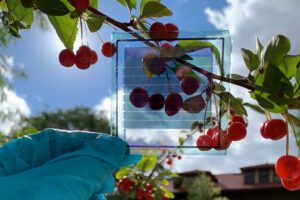
Organic photovoltaics offer realistic pathway to power-generating windows
A new fabrication process greatly improves the reliability of highly-efficient semi-transparent solar cells, which can be applied to windows to generate solar power.
$130M Electric Vehicle Center launches at U-Michigan
A former auto industry executive has been named director of the state-funded center.
The post $130M Electric Vehicle Center launches at U-Michigan appeared first on Michigan Engineering News.
Testing batteries for safety and performance without opening them up
A new formula makes sense of the way batteries respond to different alternating current frequencies, revealing materials, structures, faults and more.
The post Testing batteries for safety and performance without opening them up appeared first on Michigan Engineering News.
Optimization could cut the carbon footprint of AI training by up to 75%
Deep learning models that power giants like TikTok and Amazon, as well as tools like ChatGPT, could save energy without new hardware or infrastructure.
The post Optimization could cut the carbon footprint of AI training by up to 75% appeared first on Michigan Engineering News.
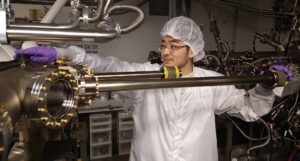
Arthur Xiao receives SVCF Scholarship to support his research in semiconductor materials
Xiao has been working on several projects in Prof. Zetian’s Mi’s group, including micro LED technology and renewable energy.
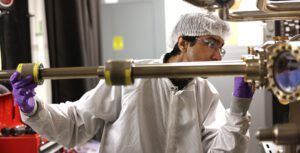
Ishtiaque Navid receives SVCF Scholarship to support his research in semiconductor materials
Navid’s research is focused on artificial photosynthesis and optoelectronics using III-Nitride based semiconductor materials.
New activity trackers for dolphin conservation
Experiments with custom-made biologging devices offer new insight into dolphin swimming and energy requirements.
The post New activity trackers for dolphin conservation appeared first on Michigan Engineering News.
Understanding a cerium quirk could help advance grid-scale energy storage
It turns out cerium flow batteries lose voltage when electrolyte molecules siphon off energy to form different complexes around the metal.
The post Understanding a cerium quirk could help advance grid-scale energy storage appeared first on Michigan Engineering News.
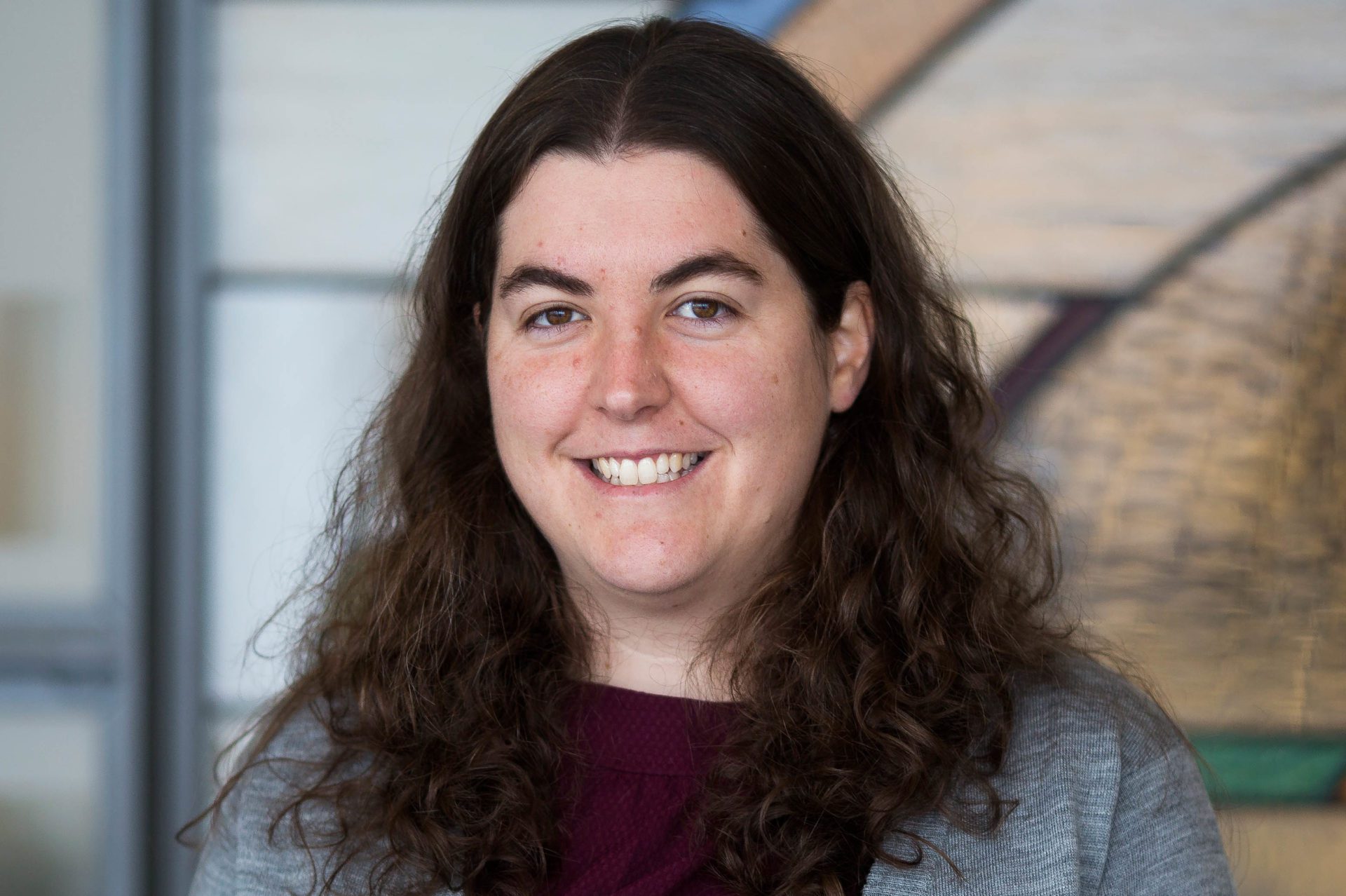
Johanna Mathieu receives Ernest and Bettine Kuh Distinguished Faculty Award
The award recognizes Mathieu’s outstanding teaching, research, and service in the area of power and energy.
Johanna Mathieu receives NSF CAREER Award to help build a smarter, more sustainable grid
Mathieu will develop optimization and control methods to leverage the flexibility available from distributed energy resources.
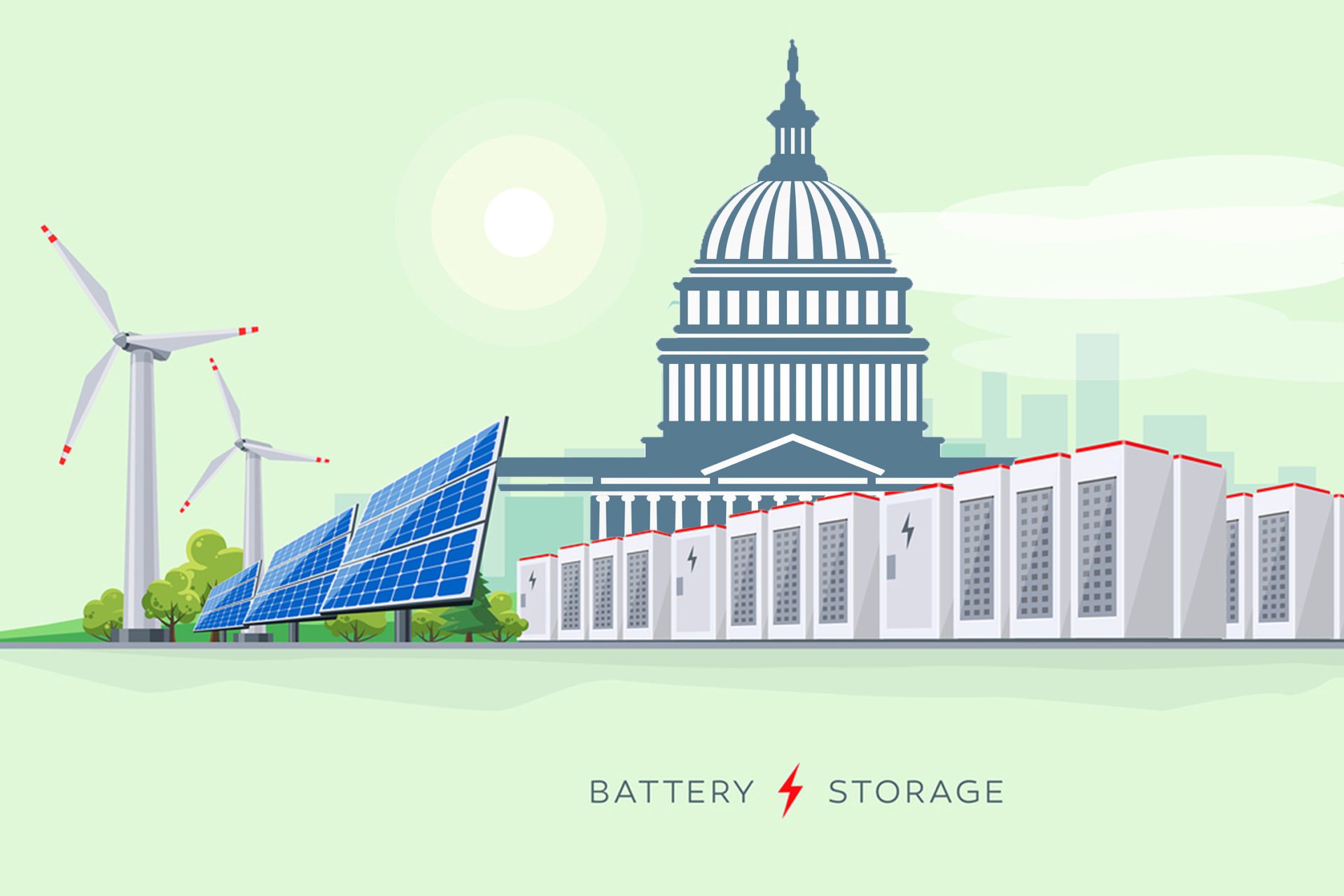
Battery economics could power the future of energy
Prof. Johanna Mathieu of EECS and Prof. Catherine Hausman of Public Policy are heading a new project to explore the social costs and benefits of battery energy storage on the electrical grid.

New research for the future of sustainable power and energy
Take a look at some of the exciting new projects that will help define the next evolution of sustainable power and energy.
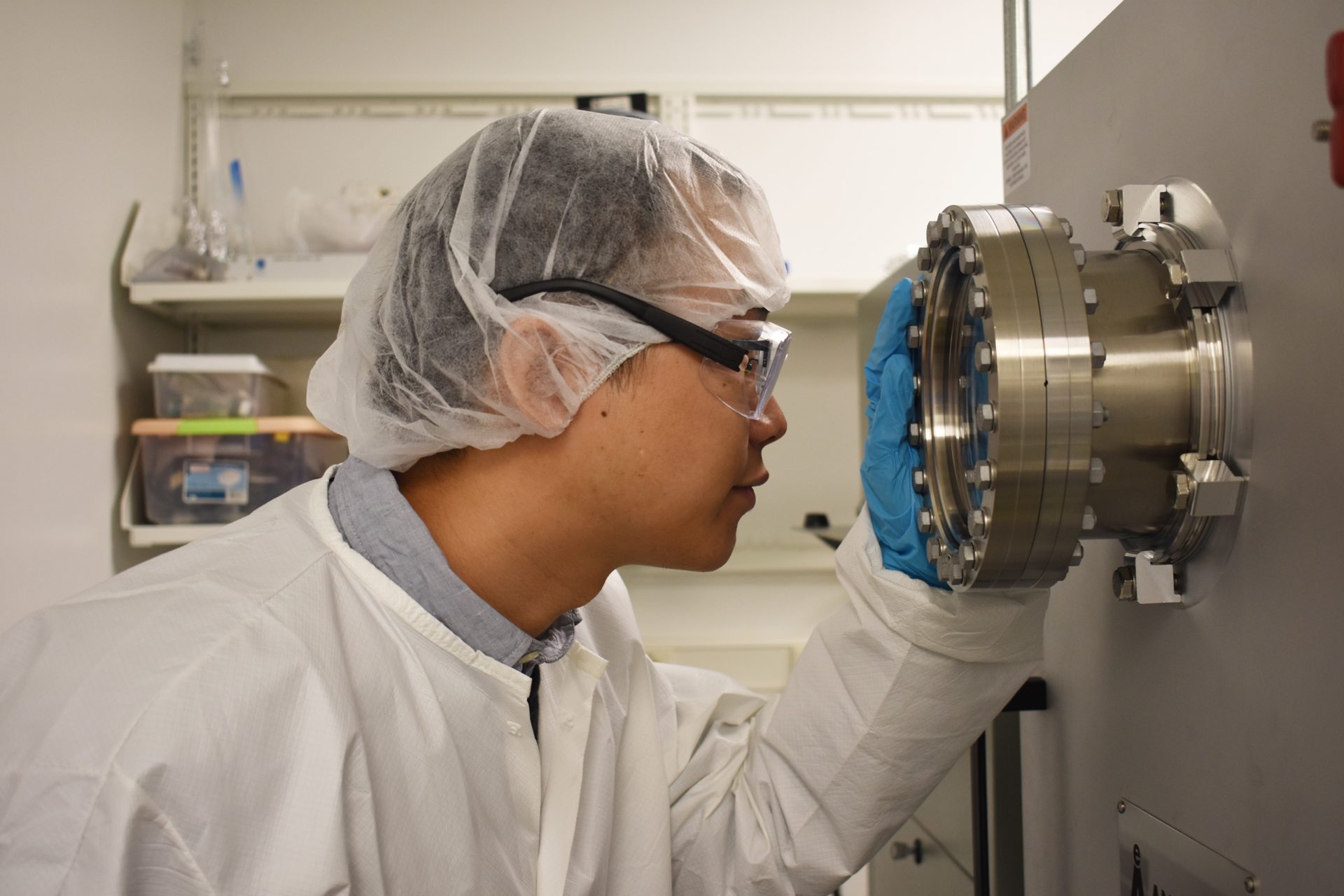
A new $1.6M energy project to develop low cost manufacturing of white organic lighting
Prof. Stephen Forrest is developing an automated high-yield roll-to-roll process to manufacture organic LEDs for lighting.

The Future is Carbon Neutral
Prof. Stephen Forrest is co-chair of U-M’s Commission on Carbon Neutrality as part of U-M’s commitment to combat climate change and craft a sustainable future for all.
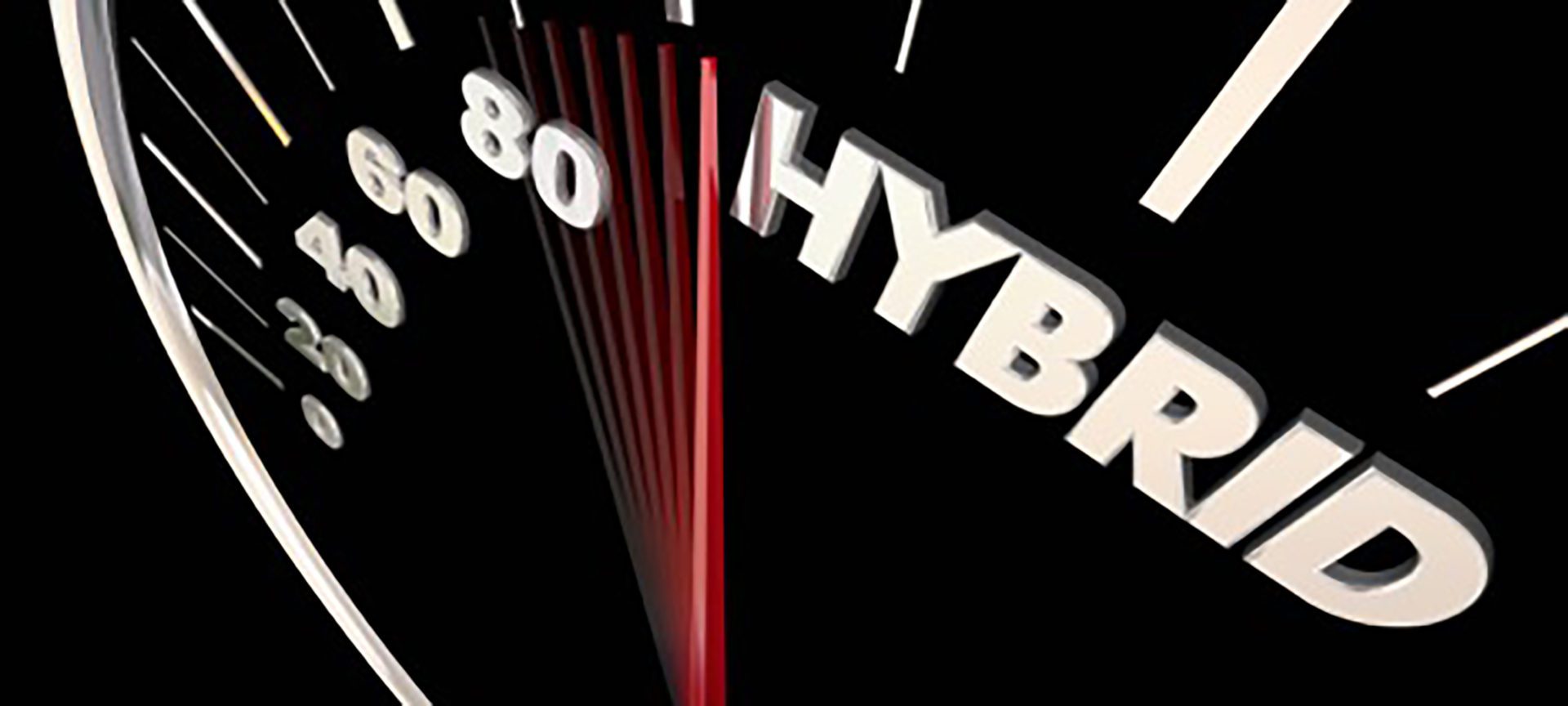
New DOE project aims to convert a traditional engine into a hybrid OP engine with the help of control algorithms
A new project funded by ARPA-E partners Achates Power and the University of Michigan in the development of a novel hybrid electric engine.
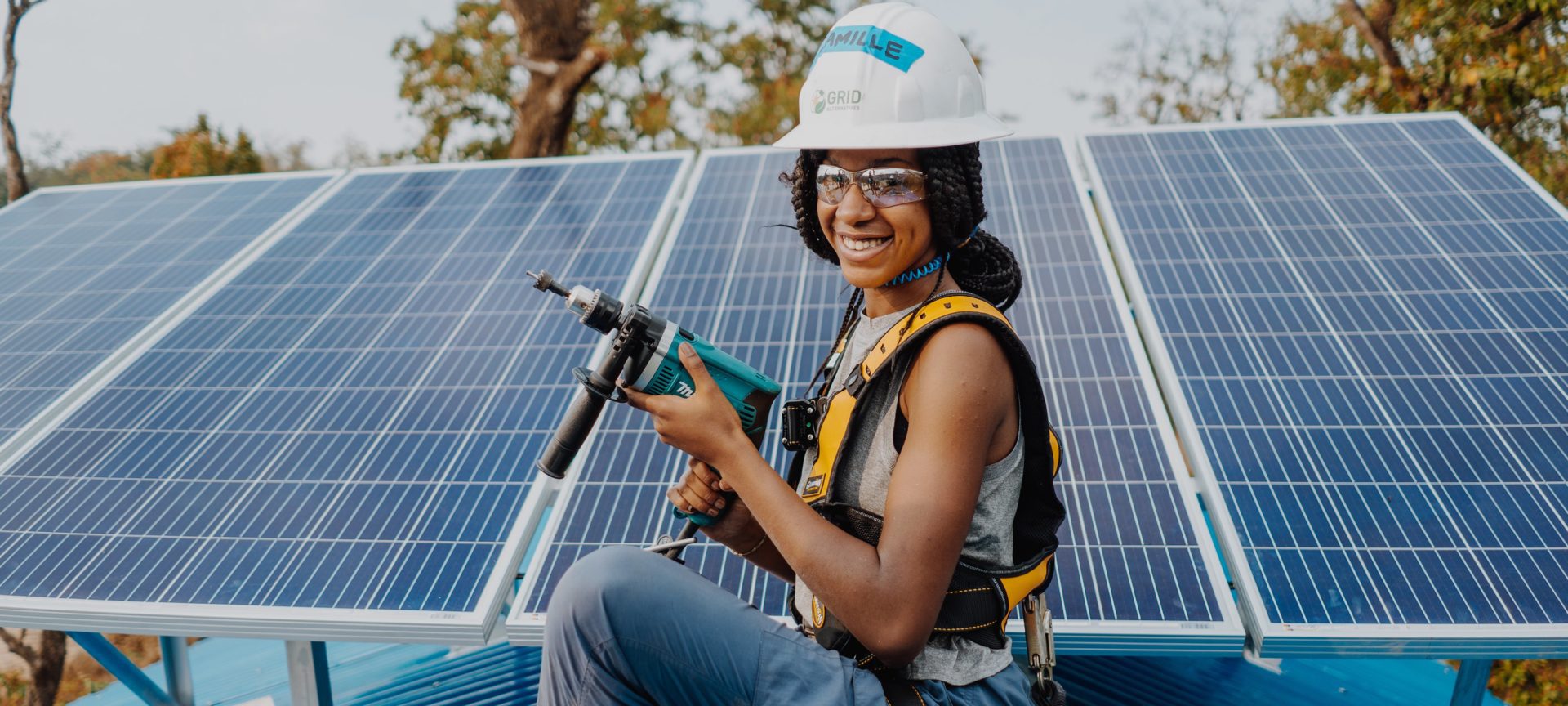
Building community through clean energy
From Long Beach, CA, to a Nepalese national park and world heritage site, undergrads Ashley Gee and Camille Burke came away with unforgettable experiences and a greater appreciation for how engineering can change the world for the better.

Prof. Louise Willingale creates extreme plasma conditions using high-intensity laser pulses
Willingale’s research in plasma physics advances many research areas from spectacular astrophysical phenomena to cancer treatment to fusion power.

Counting snowflakes for better water resource management
Mostafa Zaky has built an award-winning model that helps estimate the amount of water stored in snowpacks, which could improve climate change and flood forecasting, as well as overall water resource management.
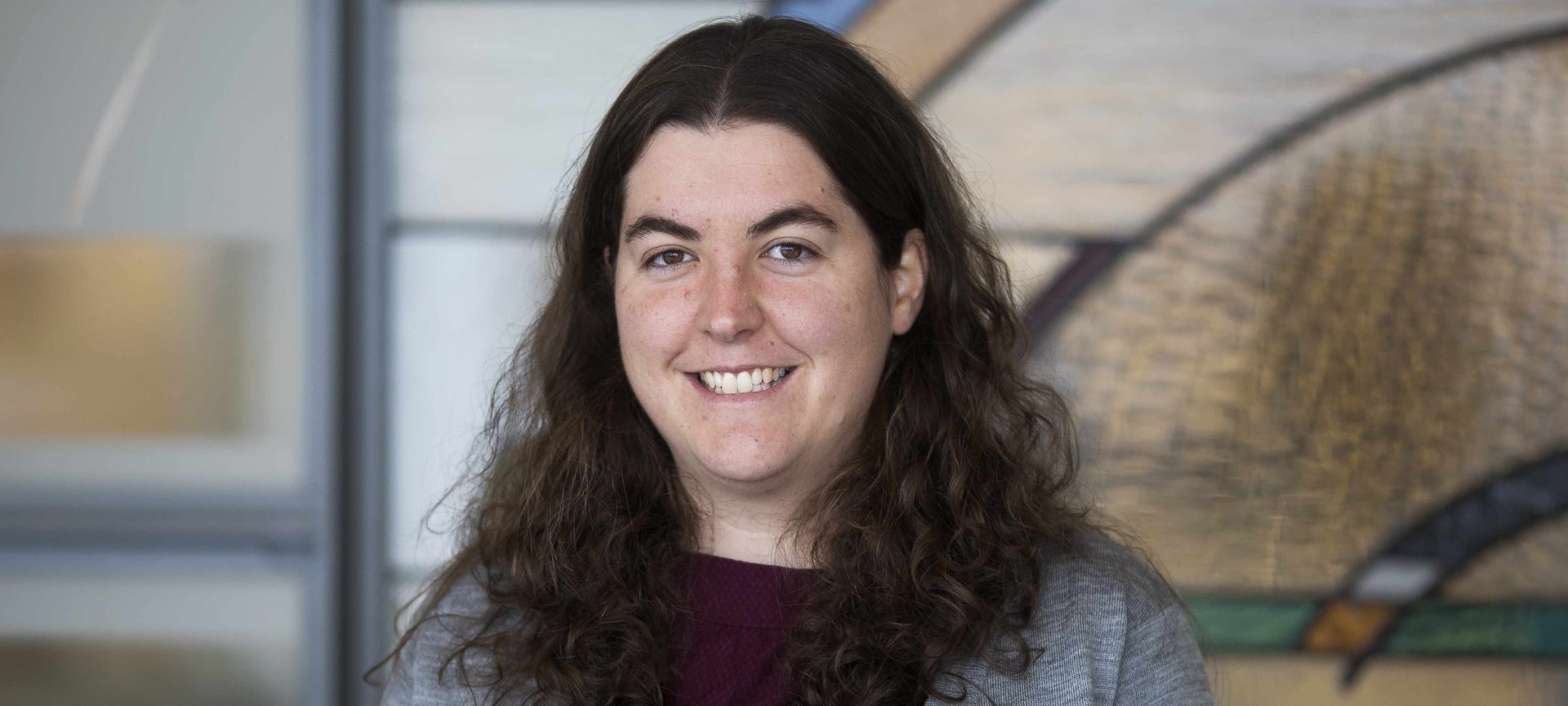
The National Academy of Engineering invites Prof. Johanna Mathieu to symposium to advance the engineering frontier
The symposium brings together 82 young engineers from different technical areas from around the country.
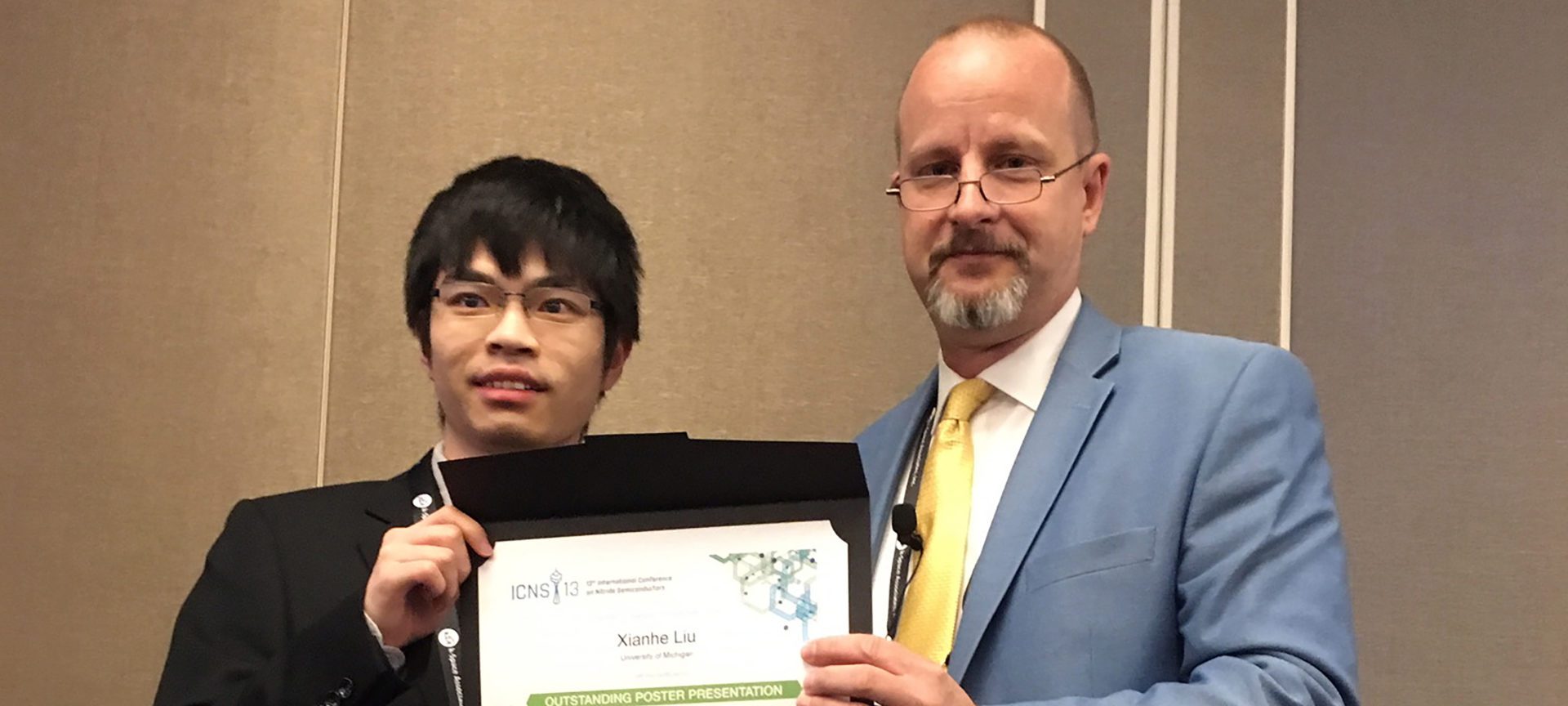
Xianhe Liu receives Best Poster Award at ICNS 2019
The research impacts development of high-efficiency, micro LEDs, used in a variety of applications.
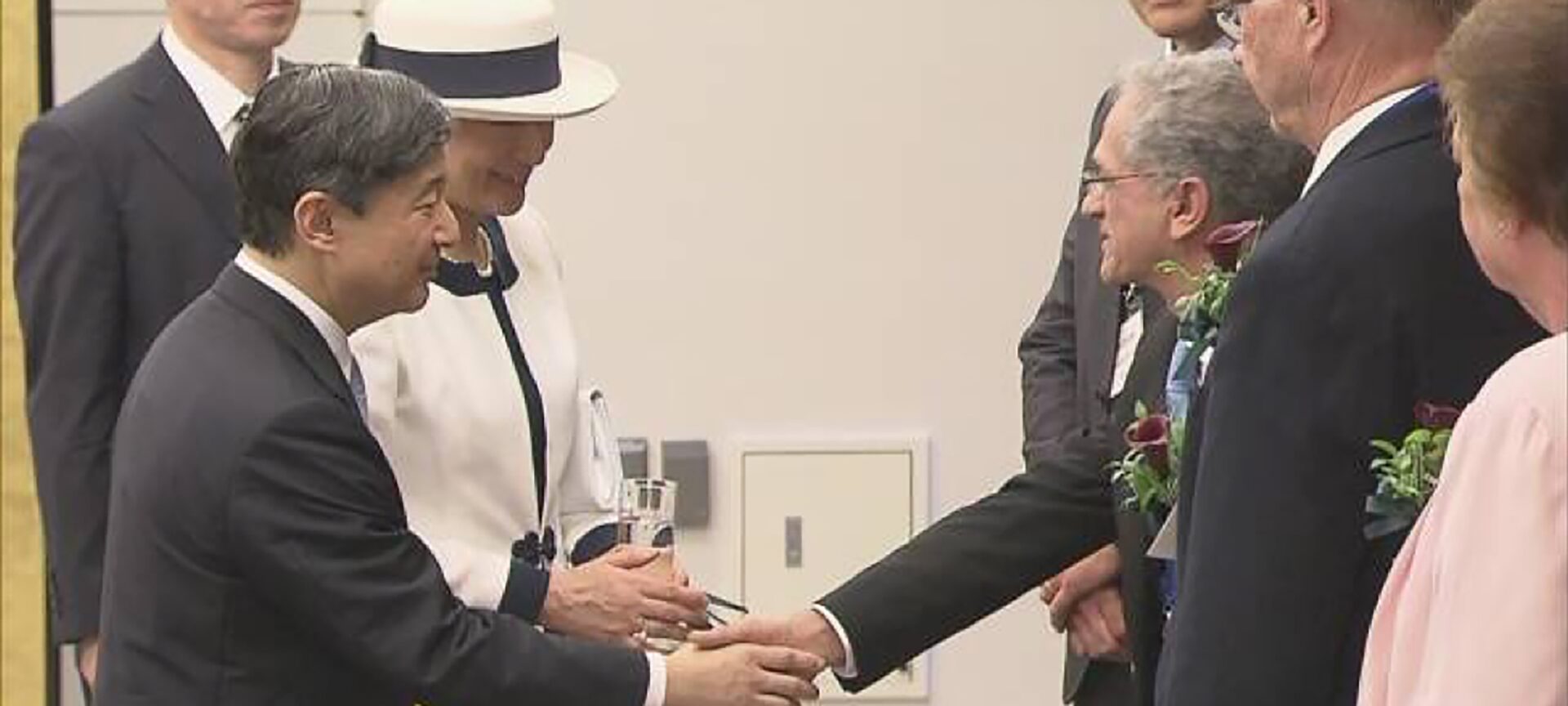
Prof. Kamal Sarabandi welcomes Emperor and Empress of Japan at IGARSS 2019
Predicting future disasters is an important goal of those participating in the IEEE Geoscience and Remote Sensing Symposium
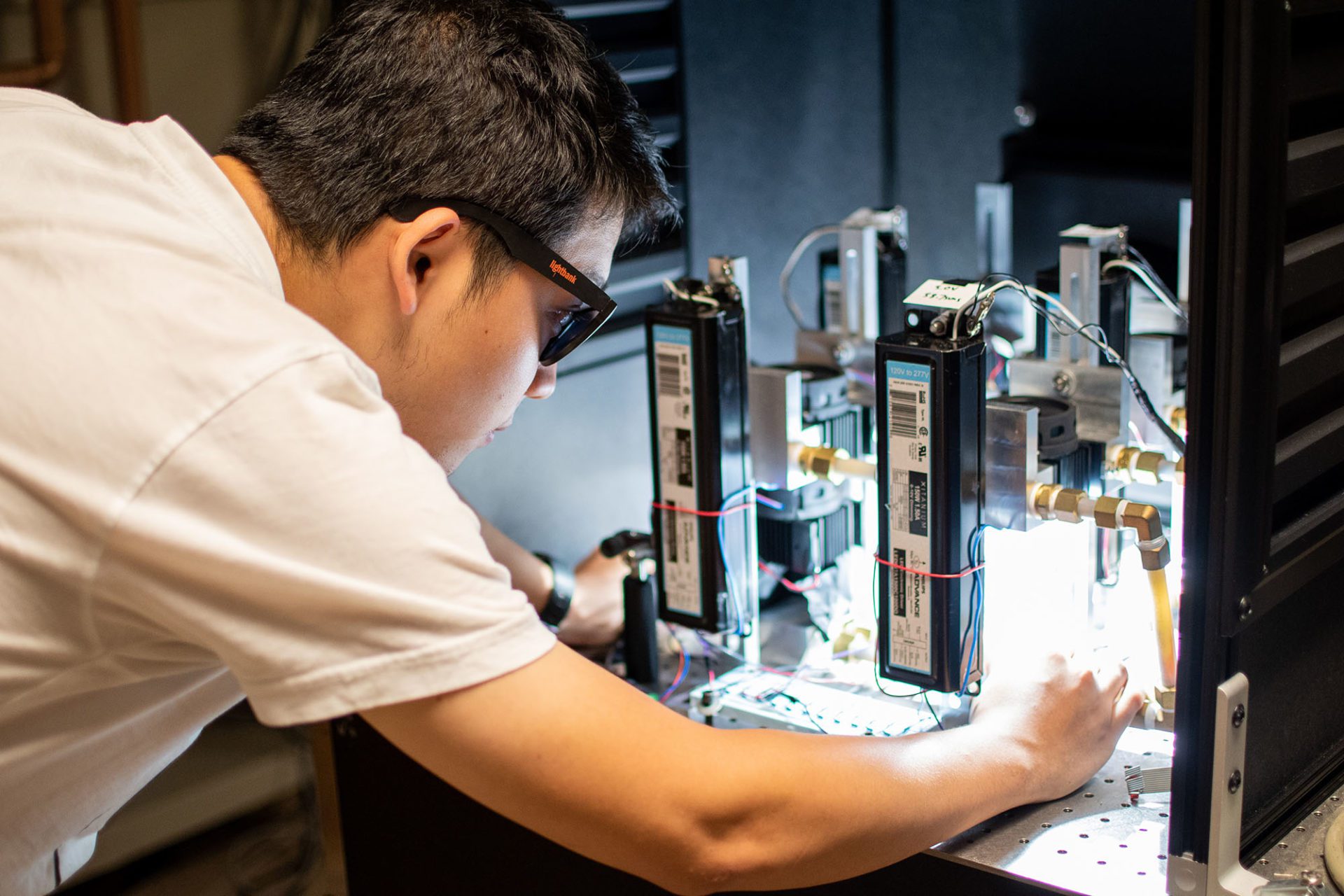
Can organic solar cells last – even into the next millennium? These might.
Finally, proof that organic photovoltaics can be as reliable as inorganic, with real-life desert testing
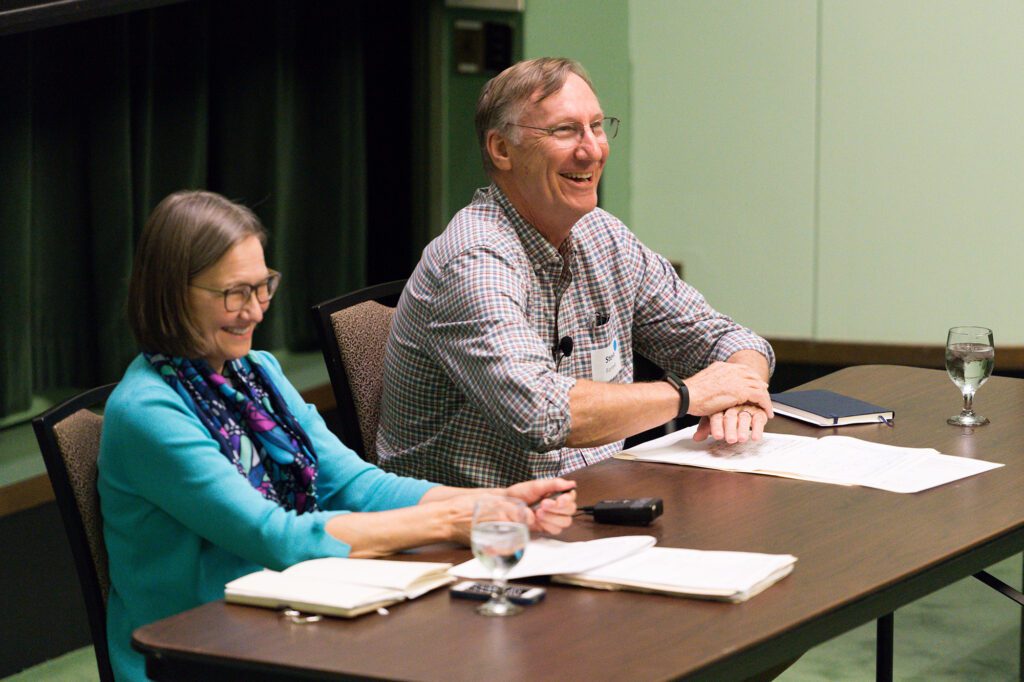
Commission co-chairs: Climate change solutions need broad commitment
An update on the work done by U-M’s Commission on Carbon Neutrality, co-chaired by Prof. Stephen Forrest.
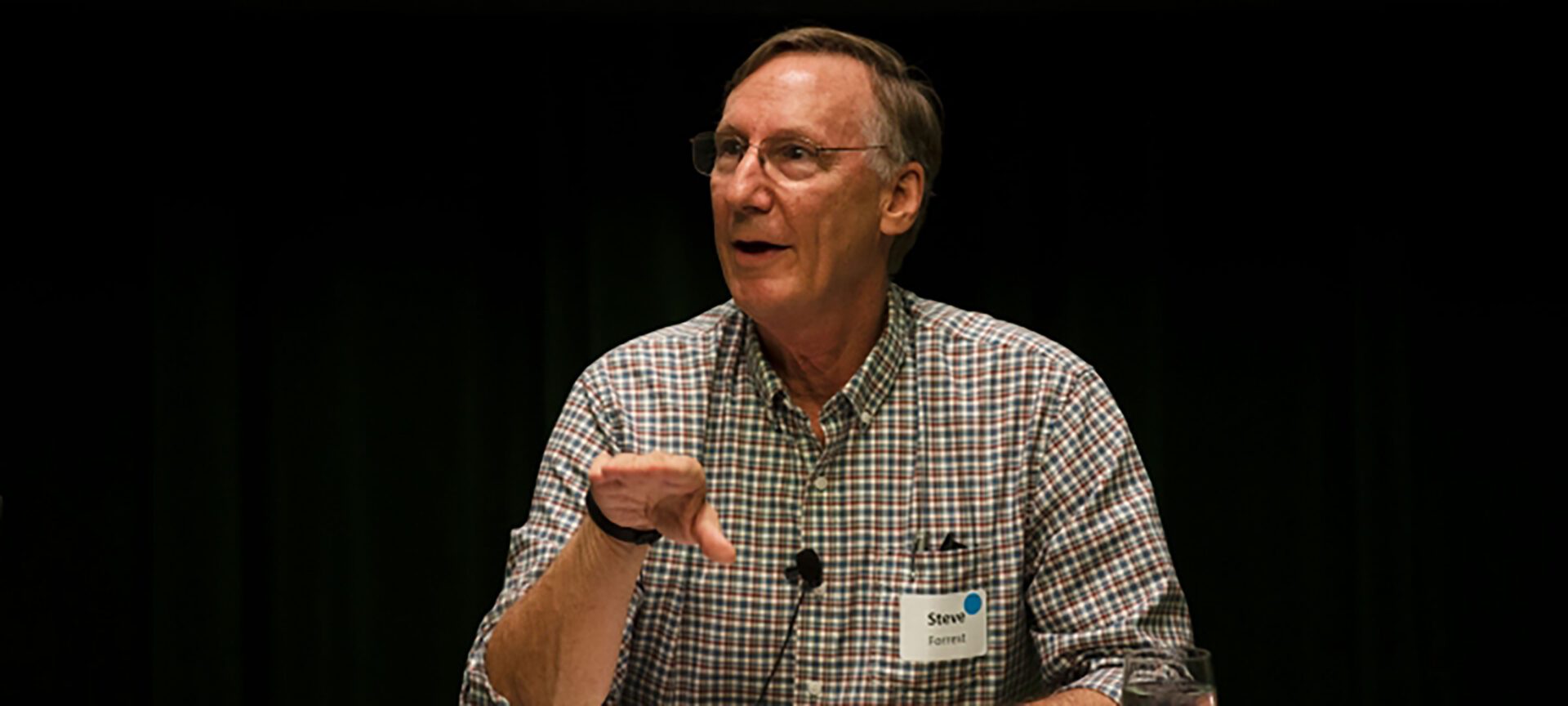
Commission on Carbon Neutrality talks progress, environmental justice at town hall
Prof. Stephen Forrest, who serves as co-chair of the commission, attended the forum to address concerns and give updates on the plan of action.

Prof. Elaheh Ahmadi receives AFOSR Young Investigator Program award
Prof. Ahmadi will investigate promising new materials needed for an increasingly electrified world
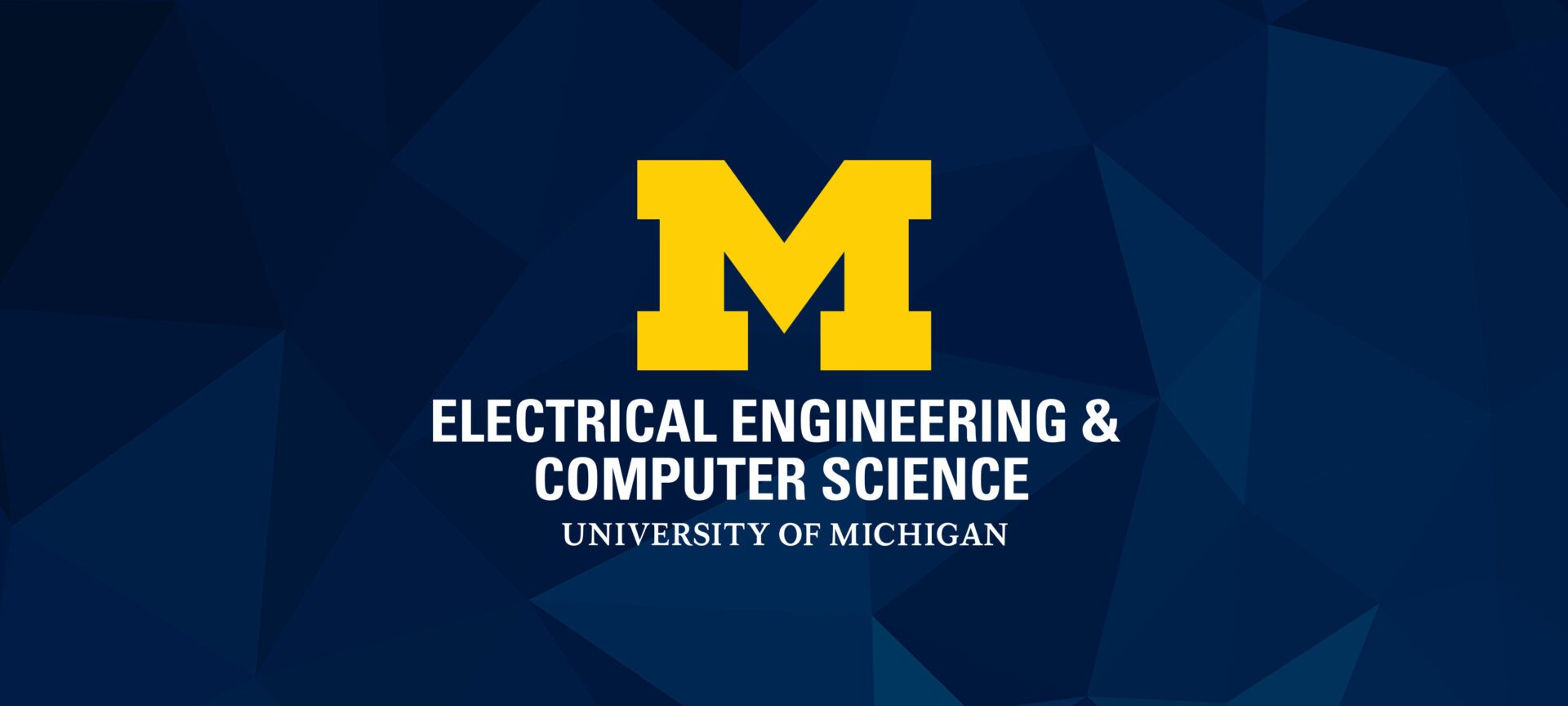
Automotive research team recognized for research excellence
The ARC works to solve a broad set of issues pertaining to the modeling and simulation of ground vehicle systems.
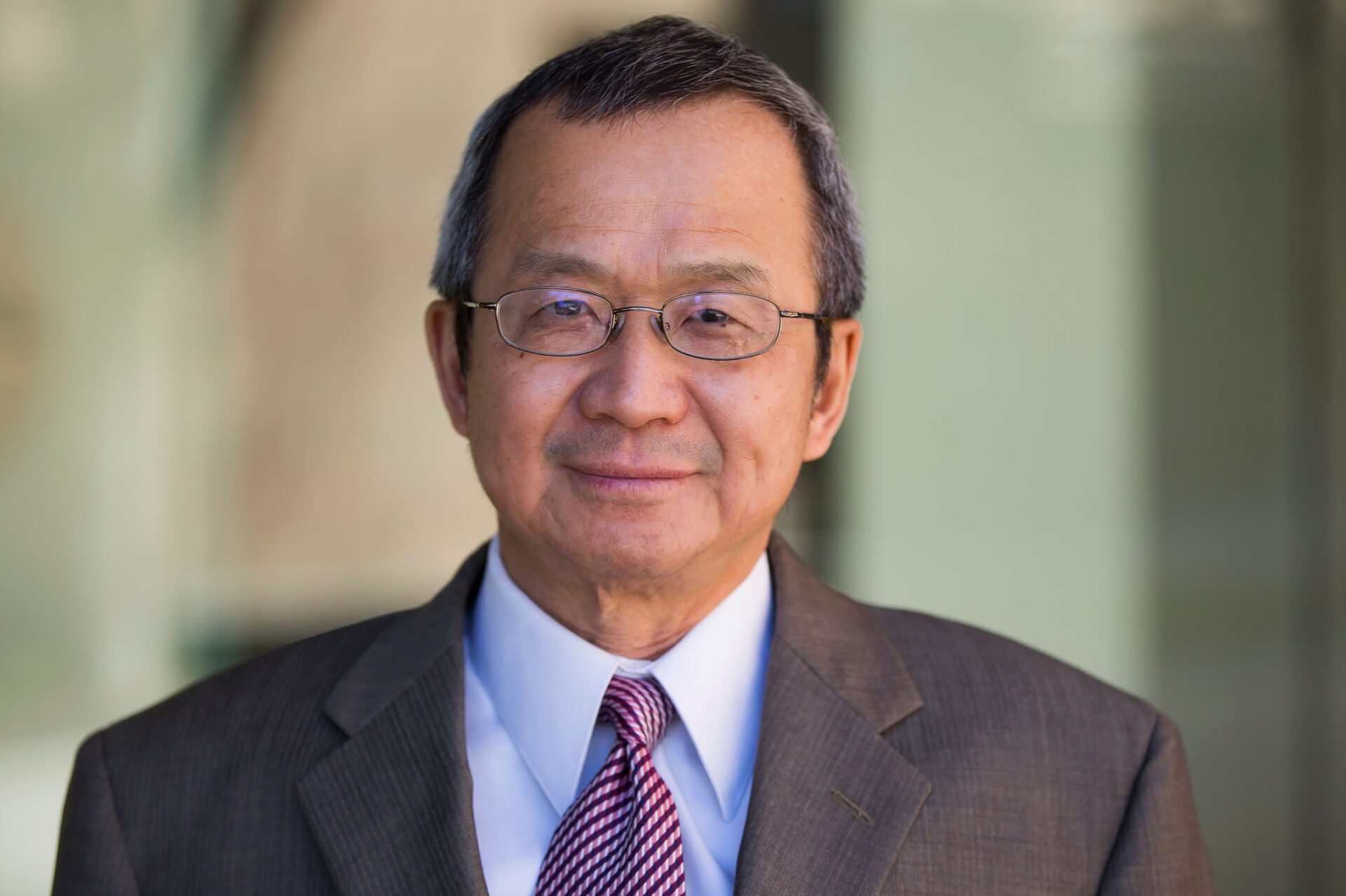
Leung Tsang elected to the National Academy of Engineering
A professor of electrical engineering and computer science is awarded one of engineering’s top honors.

Tianlin Wang recognized with Towner Prize and Distinguished Leadership Award
The College of Engineering honors ECE PhD candidate Tianlin Wang for his excellent research in remote sensing as well as his leadership and service to the community.
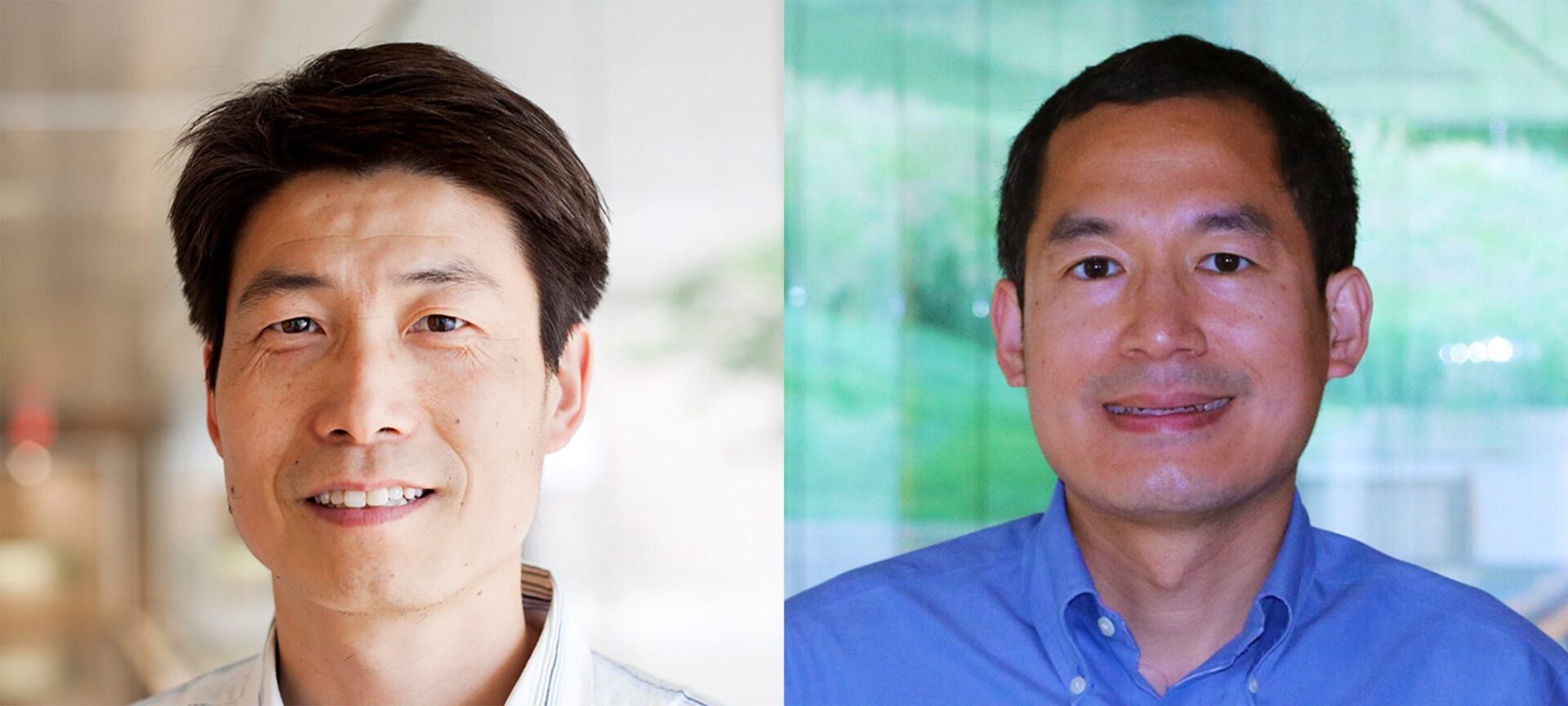
Professors Jay Guo and Zetian Mi awarded MTRAC funding for research in autonomous and green vehicles
Guo is working to boost the visibility of autonomous cars for improved safety, and Mi is building a prototype solar hydrogen production system that could out-compete electric cars.
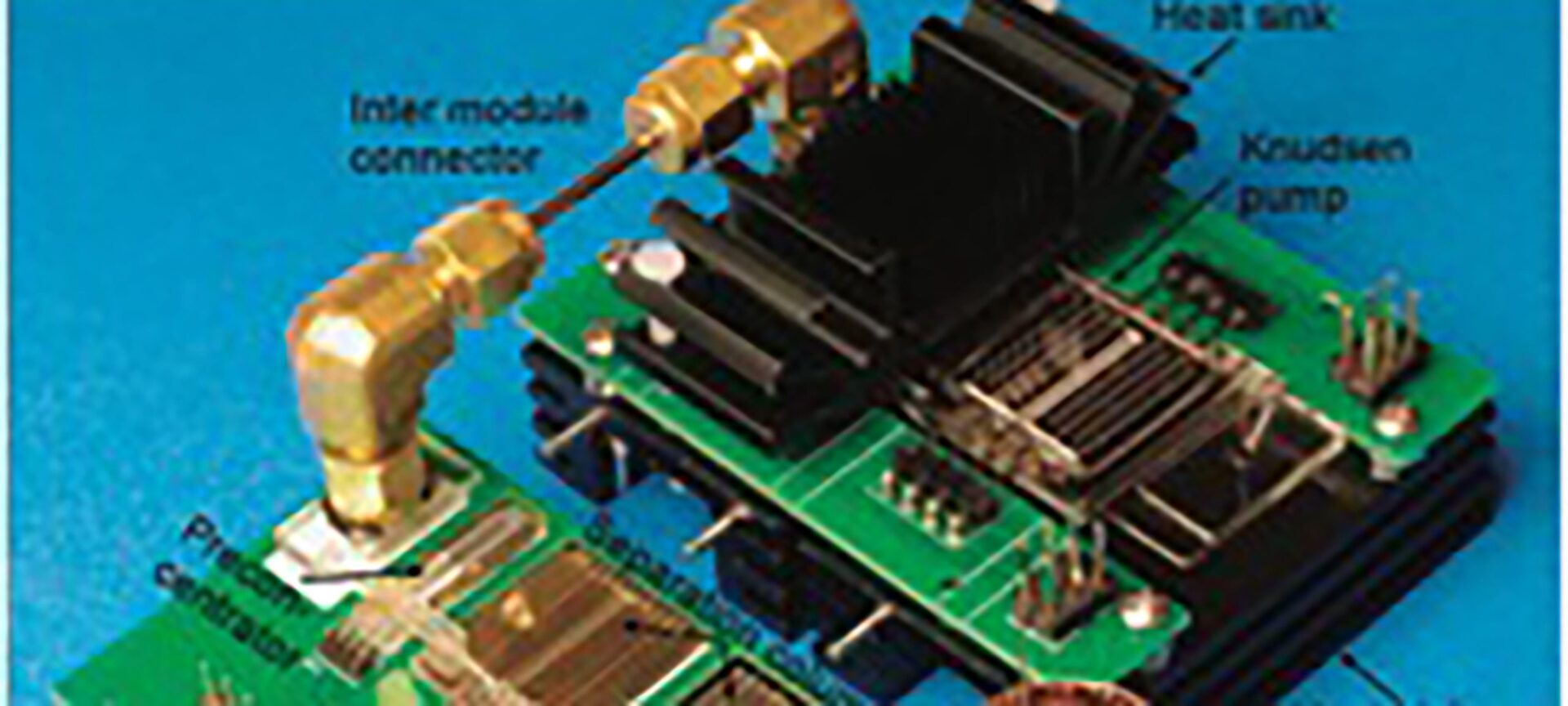
Detecting environmental pollutants with a smaller, portable, fully electric gas chromatograph
Prof. Yogesh Gianchandani and Dr. Yutao Qin received an “Outstanding Paper Award” for their fully electronic micro gas chromatography system.
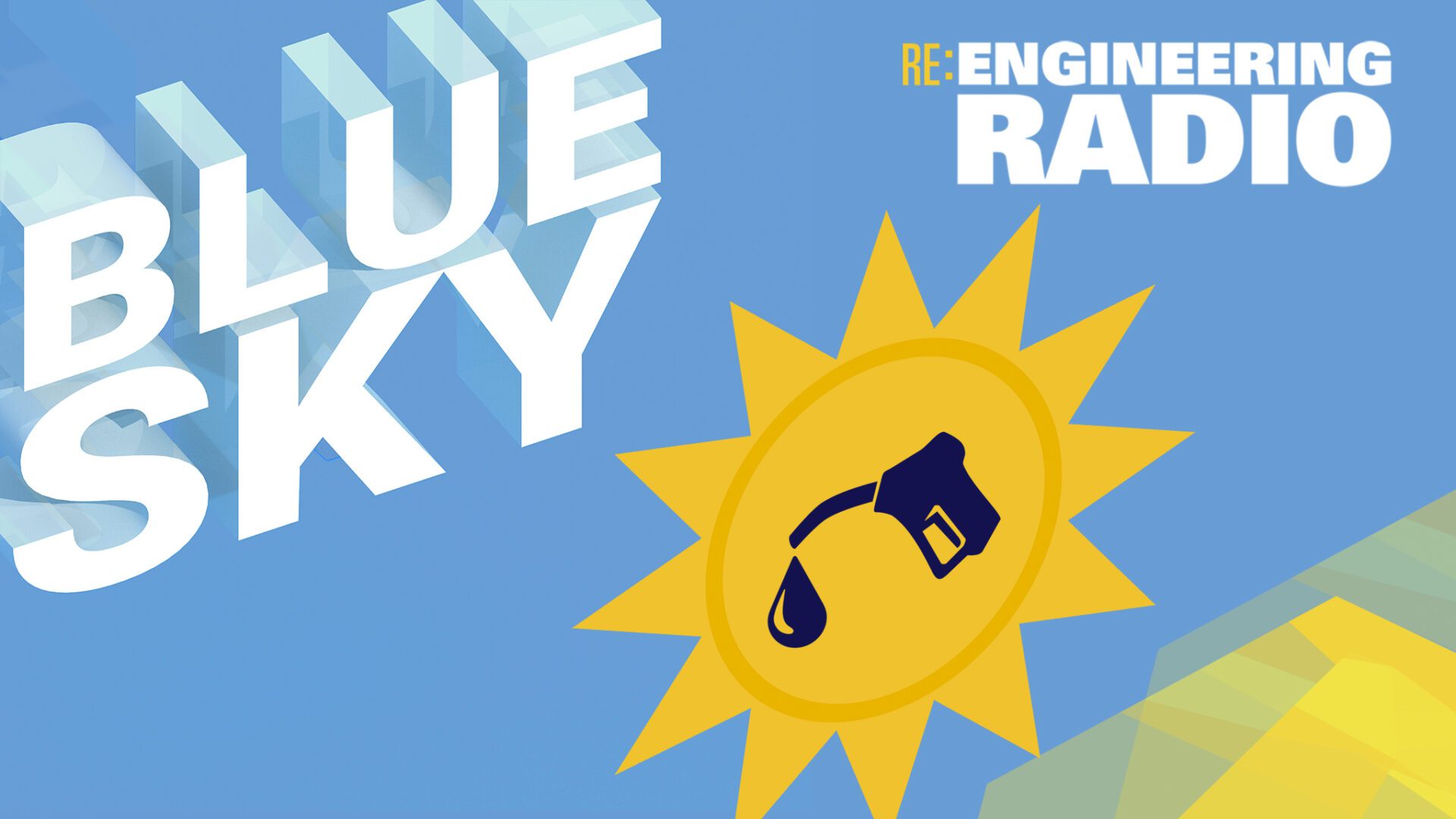
Podcast: Artificial photosynthesis for sustainable solar fuels
In S1E1, Prof. Zetian Mi talks unlocking quantum properties to close the loop on carbon emissions.
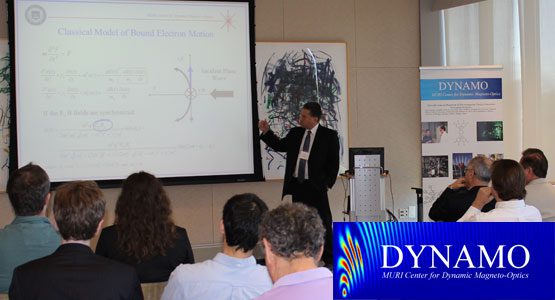
DYNAMO achieves first observation of the “charge separation effect”
Research led by Prof. Stephen Rand, Director of the Center for Dynamic Magneto-optics (DYNAMO), has important potential for energy conversion, ultrafast switching, nanophotonics, and nonlinear optics.
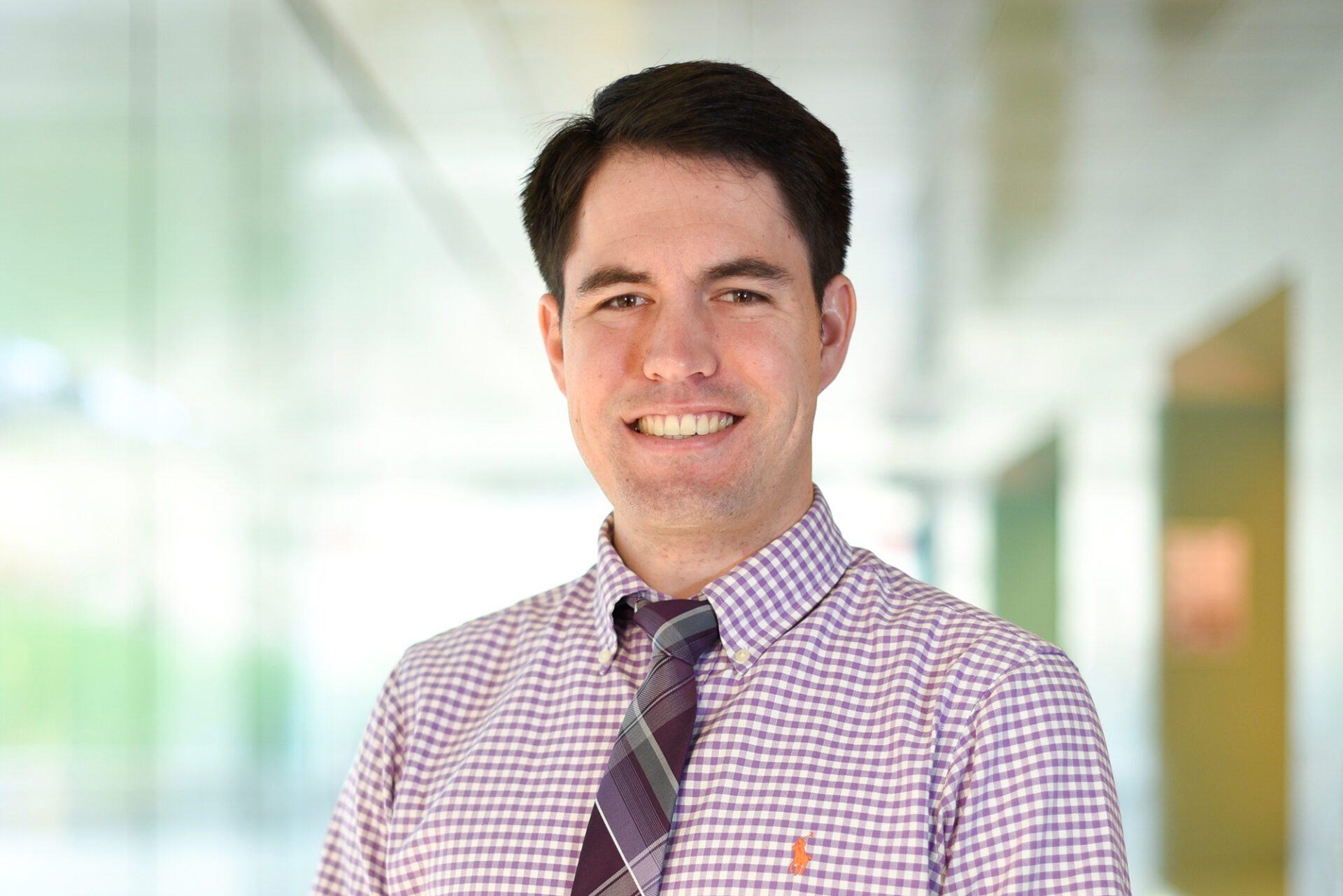
Kaleo Roberts receives scholarship from the American Indian Science and Engineering Society
Roberts works to improve remote sensing of soil moisture, which is important for environmental conservation, natural resource management, and agriculture.

Using remote sensing to track microplastics in the ocean
Electrical Engineering undergrad Madeline Evans is a key researcher on a project that uses NASA’s Cyclone Global Navigation Satellite System to monitor microplastic pollution that harms marine ecosystems.

New collaborative project for advancing energy justice in Detroit
In partnership with Detroit-based community organizations, Prof. Johanna Mathieu co-leads a team of researchers working to reduce disparities in household energy insecurity for low and moderate income households.

Optimizing the interactions between critical infrastructure systems for better flexibility, sustainability, and resiliency
PhD student Anna Stuhlmacher researches how the water distribution network can better provide services to the power network, which can allow for greater integration of renewable energy sources into the grid, reduce costs, and improve system resiliency.
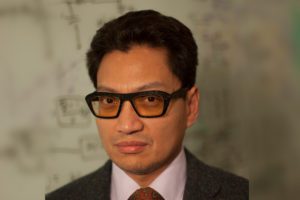
Al-Thaddeus Avestruz receives CAREER Award to advance sustainable energy storage
Using retired electric vehicle batteries, the project plans to enable widespread and equitable access to sustainable power and energy through sustainable energy storage.

Anna Stuhlmacher awarded Rackham Predoctoral Fellowship for her research that could help integrate renewable energy sources into the power grid
Stuhlmacher is working to optimize the interaction between the power distribution network and the drinking water distribution network to improve the sustainability, flexibility, and resiliency of both systems.
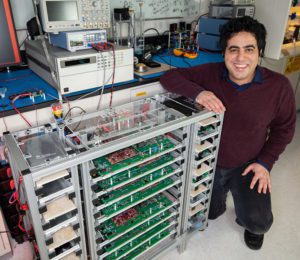
Alireza Ramyar awarded Rackham Predoctoral Fellowship for his research on power processing architectures for improved sustainability
Ramyar’s research focuses on how power and energy can be transformed, extracted from clean power generation, and stored effectively and sustainably.

Task Force report on grid stability concepts receives IEEE PES Prize Paper Award
The rapid growth of renewable energy led to an international task force to study its impact on the stability of worldwide power systems.
Batteryless next-generation cellular devices could empower a more sustainable future
PhD student Trevor Odelberg is looking to enable long range, highly reliable, and low-power cellular IoT devices that one day can run entirely on harvested energy, reducing battery waste and empowering devices to last for decades.
The post Batteryless next-generation cellular devices could empower a more sustainable future appeared first on Michigan Engineering News.
Urban solar energy: Solar panels for windows hit record 8% efficiency
Transparent solar panels on windows could take a bite out of a building’s electricity needs.
The post Urban solar energy: Solar panels for windows hit record 8% efficiency appeared first on Michigan Engineering News.
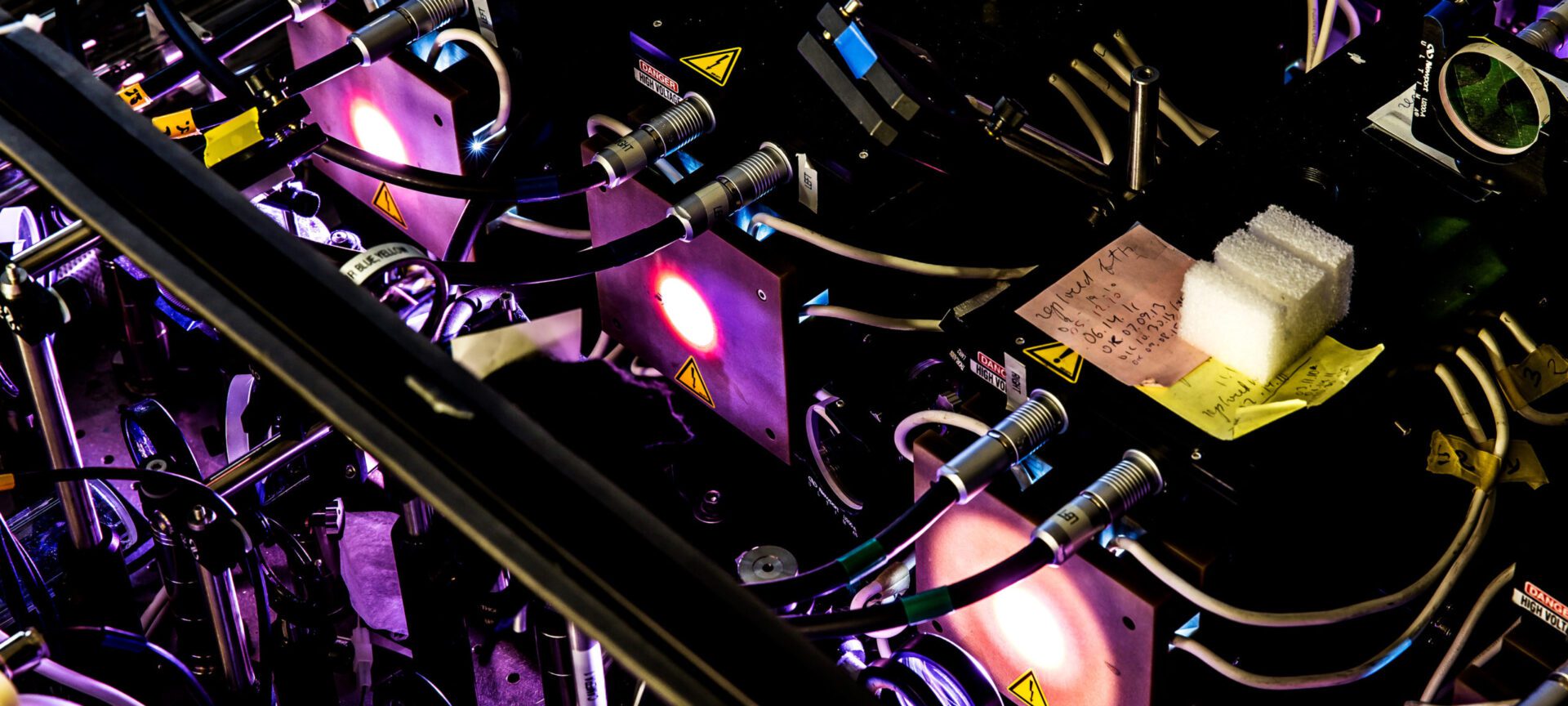
Coordination and collaboration are critical to U.S. leadership in plasma science: a Q&A with the Plasma 2020 Decadal Study co-chair
Plasma science has the potential to speed advances in medicine, energy, electronics and more—including helping us deal with pandemics.
Spray-on coating could make solar panels snow-resistant
Cold-weather-friendly formula foils snow/ice accumulation in Alaska test.
The post Spray-on coating could make solar panels snow-resistant appeared first on Michigan Engineering News.
Honoring the past and sizing up nuclear’s future at the Phoenix rededication
The Michigan Memorial Phoenix Project, conceived as a war memorial following World War II, remains relevant in the face of climate change and international conflict.
The post Honoring the past and sizing up nuclear’s future at the Phoenix rededication appeared first on Michigan Engineering News.
How air conditioners could advance a renewable power grid
In an approach that won’t disrupt consumers, researchers will tackle two of the biggest issues in the energy industry.
The post How air conditioners could advance a renewable power grid appeared first on Michigan Engineering News.
The “Magic Ratio” that could power tomorrow’s solar cells
A Q&A with Rachel Goldman
The post The “Magic Ratio” that could power tomorrow’s solar cells appeared first on Michigan Engineering News.
‘Green methane’ from artificial photosynthesis could recycle CO2
A catalyst on a solar panel can make methane, the main component of natural gas, with carbon dioxide, water and sunlight.
The post ‘Green methane’ from artificial photosynthesis could recycle CO2 appeared first on Michigan Engineering News.
Russel Lecture: Fighting climate change with organic electronics
The researcher-entrepreneur who helped bring OLED displays to the masses envisions a future of efficient lighting and next-gen solar power.
The post Russel Lecture: Fighting climate change with organic electronics appeared first on Michigan Engineering News.
U-M, community partners tackle energy insecurity in three Detroit neighborhoods
Johanna Mathieu is one of four principal investigators on a project to improve home energy efficiency and to lower monthly utility bills.
The post U-M, community partners tackle energy insecurity in three Detroit neighborhoods appeared first on Michigan Engineering News.
Harnessing the hum
The property that makes fluorescent lights buzz could power a new generation of computing devices.
The post Harnessing the hum appeared first on Michigan Engineering News.
COVID-19 is laying waste to many US recycling programs
‘The trends we see in the making and consuming of single-use goods, particularly plastic, could have lasting negative effects on the circular economy.’
The post COVID-19 is laying waste to many US recycling programs appeared first on Michigan Engineering News.
Mirror-like photovoltaics get more electricity out of heat
By reflecting nearly all the light they can’t turn into electricity, they help pave the way for storing renewable energy as heat.
The post Mirror-like photovoltaics get more electricity out of heat appeared first on Michigan Engineering News.
1,000-cycle lithium-sulfur battery could quintuple electric vehicle ranges
The nanofibers recycled from Kevlar vests are harnessed in a biomimetic design to help solve a battery’s longevity problem.
The post 1,000-cycle lithium-sulfur battery could quintuple electric vehicle ranges appeared first on Michigan Engineering News.
‘Peecycling’ payoff: Urine diversion shows multiple environmental benefits when used at city scale
New study is the first in-depth analysis of the environmental performance and benefits of large-scale urine recycling relative to conventional wastewater treatment and fertilizer production.
The post ‘Peecycling’ payoff: Urine diversion shows multiple environmental benefits when used at city scale appeared first on Michigan Engineering News.
Wastewater treatment at one-third the size and cost
Systems featuring a ‘membrane-aerated biofilm reactor’ can also remove more nitrogen from treatment plant discharges.
The post Wastewater treatment at one-third the size and cost appeared first on Michigan Engineering News.
Bendable concrete and other CO2-infused cement mixes could dramatically cut global emissions
In The Conversation, experts break down what’s needed to make CO2 in concrete work on a wide scale to curb global emissions.
The post Bendable concrete and other CO2-infused cement mixes could dramatically cut global emissions appeared first on Michigan Engineering News.
Q&A with Henry Liu, Mcity’s new director
University of Michigan’s mobility research center has been realigned under Michigan Engineering.
The post Q&A with Henry Liu, Mcity’s new director appeared first on Michigan Engineering News.
Spotlight: Data is life
Take a multimedia trip to the Amazon and meet the researchers who are working to understand how the future of the rainforest could affect us all.
The post Spotlight: Data is life appeared first on Engineering Research News.
North American cold-climate forests are already absorbing less carbon, study shows
By zeroing in on different high-latitude regions around the globe, researchers reveal what global averages mask.
The post North American cold-climate forests are already absorbing less carbon, study shows appeared first on Michigan Engineering News.
‘Doomsday Glacier’ may be more stable than initially feared
Study sheds light on the future of the massive Thwaites Glacier.
The post ‘Doomsday Glacier’ may be more stable than initially feared appeared first on Michigan Engineering News.
The ocean is full of tiny plastic particles – we found a way to track them with satellites
In The Conversation, Chris Ruf explains how CYGNSS can find the source ocean microplastics and aid in future clean up.
The post The ocean is full of tiny plastic particles – we found a way to track them with satellites appeared first on Michigan Engineering News.
Opinion: After a summer of weather horrors, adapting to climate change is an imperative
In a perspective piece for Washington Post, Richard Rood says response to climate change requires an adaption mindset in addition to mitigation efforts.
The post Opinion: After a summer of weather horrors, adapting to climate change is an imperative appeared first on Michigan Engineering News.
Longer, more intense allergy seasons could result from climate change
Rising temperatures, increased CO2 will drive trees, grasses, weeds to produce more pollen.
The post Longer, more intense allergy seasons could result from climate change appeared first on Michigan Engineering News.
Flaring allows more methane into the atmosphere than we thought
The upside is that simple fixes will have a big impact
The post Flaring allows more methane into the atmosphere than we thought appeared first on Michigan Engineering News.
U-M team’s power grid work earn kudos at national conference
Society for Risk Analysis recognizes Michigan researchers for work predicting storm damage.
The post U-M team’s power grid work earn kudos at national conference appeared first on Michigan Engineering News.
How self-driving car subsidies could carry us through the ‘dark age’ of deployment
A game-theory approach identifies which policy could support autonomous vehicles’ market penetration—and environmental benefits
The post How self-driving car subsidies could carry us through the ‘dark age’ of deployment appeared first on Michigan Engineering News.
In the news: Michigan Engineering experts June 21-25
Highlights include Vox and the New York Times.
The post In the news: Michigan Engineering experts June 21-25 appeared first on Michigan Engineering News.
$2M to replace fossil fuels with solar power in fertilizer production
The new approach could enable farmers to produce ammonia on-site, and also reduce CO2 emissions from fertilizer production.
The post $2M to replace fossil fuels with solar power in fertilizer production appeared first on Michigan Engineering News.
$3.4M to turn up the heat at solar-thermal plants
Improved heat-trapping materials for solar thermal energy could help the U.S. meet its goal of cutting solar energy costs in half by 2030.
The post $3.4M to turn up the heat at solar-thermal plants appeared first on Michigan Engineering News.
New approach reduces EV battery testing time by 75%
System developed at the University of Michigan saves time and money in the race to create better batteries for the electric vehicle revolution
The post New approach reduces EV battery testing time by 75% appeared first on Michigan Engineering News.
$11M DOE center for next-gen battery technology
The University of Michigan will lead a suite of projects involving multiple institutions to boost understanding of solid-state EV power cells.
The post $11M DOE center for next-gen battery technology appeared first on Michigan Engineering News.
Carbon capture, utilization and storage roadmap reveals technologies that are ready to go
Concrete and construction aggregates could be carbon negative and dollar positive while sustainable aviation fuel and methanol could also turn a profit.
The post Carbon capture, utilization and storage roadmap reveals technologies that are ready to go appeared first on Michigan Engineering News.
Tracking ocean microplastics from space
Satellites give new insights on the Great Pacific Garbage Patch, plus sources and flows of ocean microplastic.
The post Tracking ocean microplastics from space appeared first on Michigan Engineering News.
Shipping is tough on the climate and hard to clean up – these innovations can help cut emissions
In The Conversation, NAME Chair Jing Sun explains some of the fuels and technology that could improve shipping sustainability in the future.
The post Shipping is tough on the climate and hard to clean up – these innovations can help cut emissions appeared first on Michigan Engineering News.
In the news: Michigan Engineering experts June 7-11
Highlights include Newsweek and The Conversation.
The post In the news: Michigan Engineering experts June 7-11 appeared first on Michigan Engineering News.
Lasers can detect weapons-grade uranium from afar
Researchers have shown that a technique often used to identify chemicals at a distance could help sniff out illicit nuclear activities from as far as a couple miles away.
The post Lasers can detect weapons-grade uranium from afar appeared first on Michigan Engineering News.
How a spray from the hardware store could improve nuclear fusion
A coating of polyurethane keeps plasma problems in check during magnetic compression.
The post How a spray from the hardware store could improve nuclear fusion appeared first on Michigan Engineering News.
Using lasers to measure uranium enrichment
Nuclear energy and nuclear nonproliferation would both benefit from a faster, easier way to measure what proportion of uranium atoms can split.
The post Using lasers to measure uranium enrichment appeared first on Michigan Engineering News.
Treating PFAS water contamination with cold plasma
University of Michigan researchers are developing better plasma technology that can destroy PFAS compounds
The post Treating PFAS water contamination with cold plasma appeared first on Michigan Engineering News.
Biden’s climate pledge: Engineers offer insights
Experts on electric vehicles, carbon capture and sequestration, and nuclear energy weigh in.
The post Biden’s climate pledge: Engineers offer insights appeared first on Michigan Engineering News.
Strong magnetic fields change how friction works in plasma
Rather than just slowing down a charged particle moving through a plasma, friction can also push from the side in a strong magnetic field.
The post Strong magnetic fields change how friction works in plasma appeared first on Michigan Engineering News.
Key takeaways from the COP26 Summit
Three Michigan Engineering experts offer insights following the summit in Glasgow.
The post Key takeaways from the COP26 Summit appeared first on Michigan Engineering News.
Nuclear “shadow corrosion” reproduced in the lab, paving way to longer fuel life
Now that it’s understood, researchers are on their way to preventing this type of degradation in nuclear power plants.
The post Nuclear “shadow corrosion” reproduced in the lab, paving way to longer fuel life appeared first on Michigan Engineering News.
$5.1M to advance nuclear energy awarded to U-M
The Department of Energy will support research into better heat exchangers as well as improved predictions for neutron physics and radiation damage.
The post $5.1M to advance nuclear energy awarded to U-M appeared first on Michigan Engineering News.
Land use matters as communities cut carbon emissions
Communities will have varied tolerances for the acreage occupied by renewables. A new study quantifies the land needed for different options.
The post Land use matters as communities cut carbon emissions appeared first on Michigan Engineering News.
University of Michigan partners on multi-institution planning effort for state’s water future
Work for the Michigan Department of Environment, Great Lakes and Energy will develop a policy roadmap to safe, low cost water services.
The post University of Michigan partners on multi-institution planning effort for state’s water future appeared first on Michigan Engineering News.

Solar-powered chemistry uses carbon dioxide and water to make feedstock for fuels, chemicals
Producing synthesis gas, a precursor of a variety of fuels and chemicals, no longer requires natural gas, coal or biomass.
Photosynthesis copycat may improve solar cells
The new approach moves energy efficiently and could reduce energy losses converting light into electricity.
The post Photosynthesis copycat may improve solar cells appeared first on Michigan Engineering News.
 Michigan Engineering | University of Michigan
Michigan Engineering | University of Michigan 